The ratties’ primary food source should be a good lab block/pelleted food (such as Oxbow Rat food), supplemented with daily cooked and fresh veggies, legumes, beans, rice, pasta, leafy greens, and occasional fruits. We believe that VEGAN DIET is not only morally consistent for us, and our fellow omnivores, but also vital for rats’ wellbeing and overall health. Today animal derived foods are too stained with hormones, pesticides, antibiotics and steroids (see our Vegan For the Animals pages for more info!) and are to be avoided all together. Even if not harmful due to many additives and chemical preservatives (that are impossible to avoid), animal derived foods are simply not a necessity. Well planned vegan diets are nutritionally adequate and may provide health benefits in the prevention and treatment of certain rat diseases (such as tumors and cancer).
To see some of ratty dinners served at ECC foster homes check the pictures bellow!
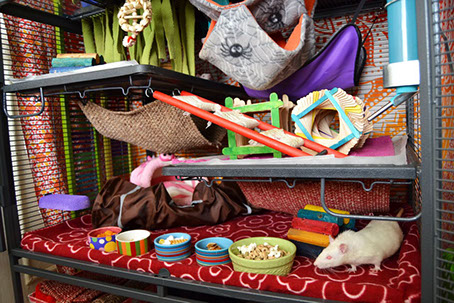

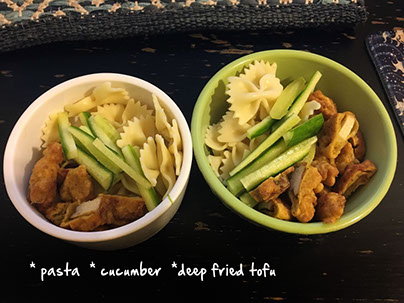
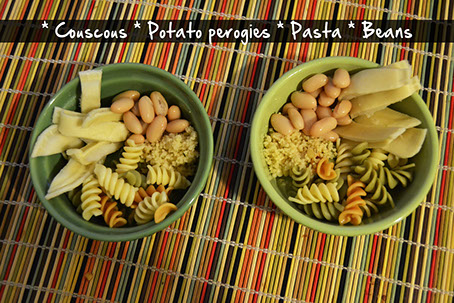


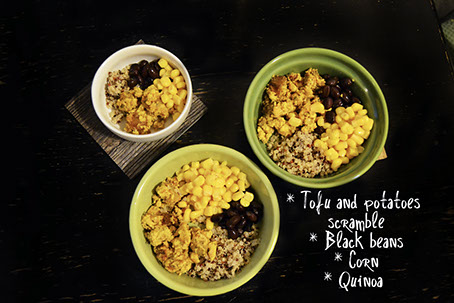

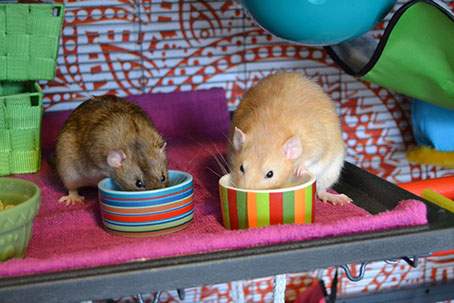
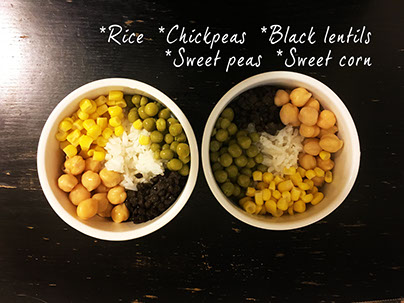

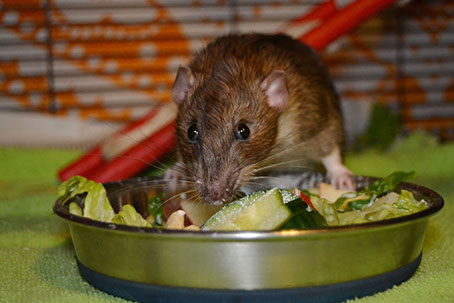
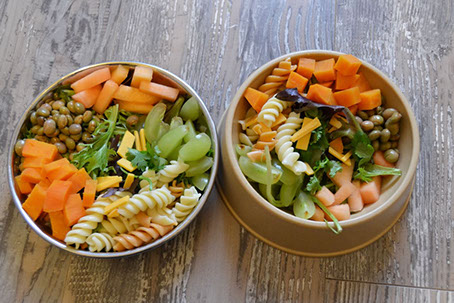
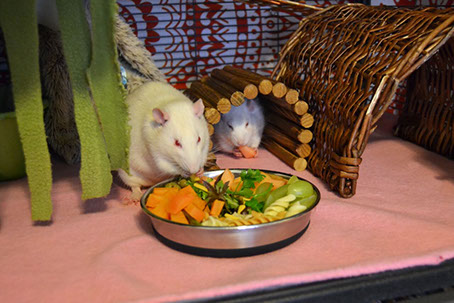
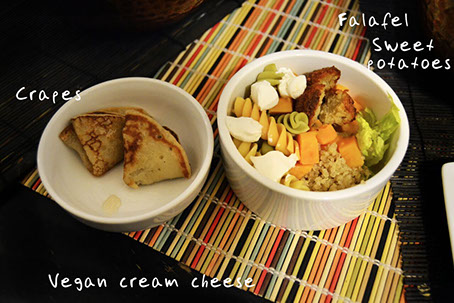
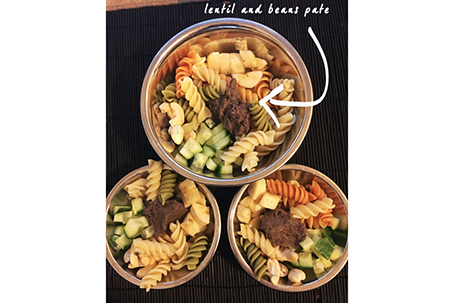


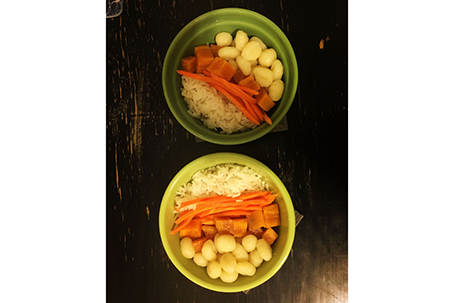





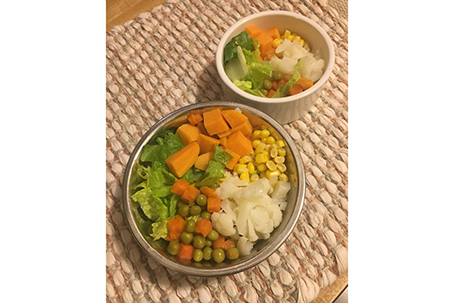

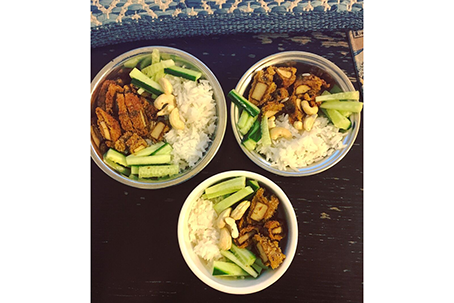
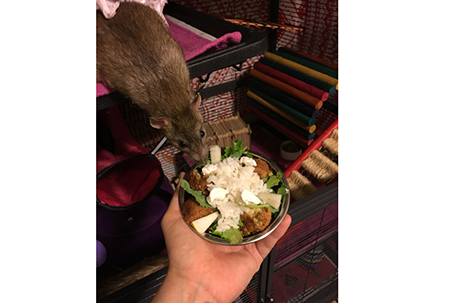

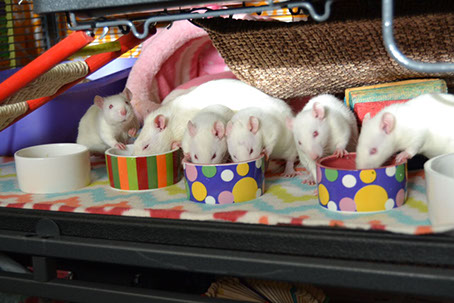

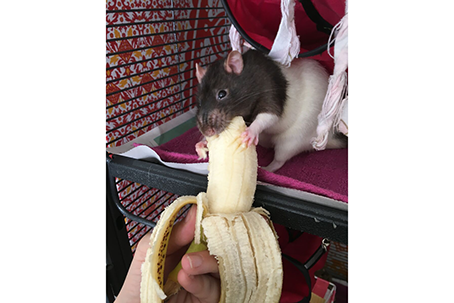
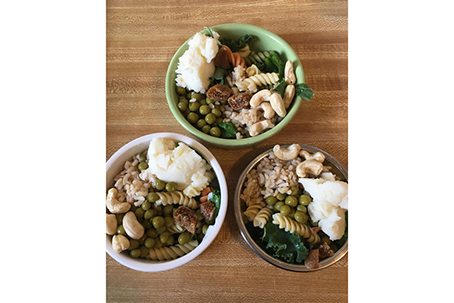
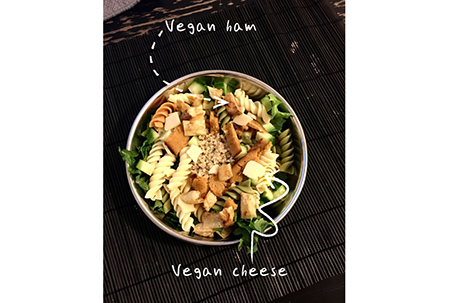




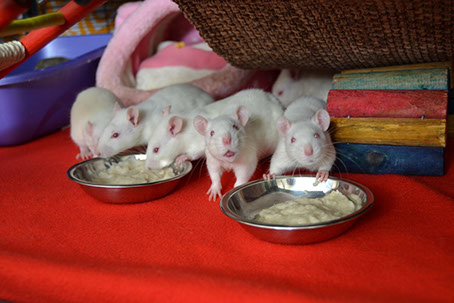
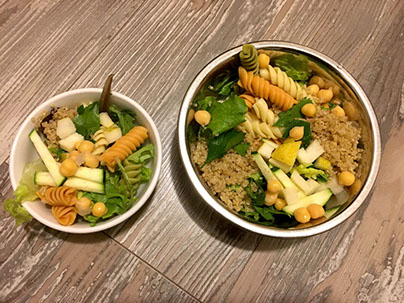




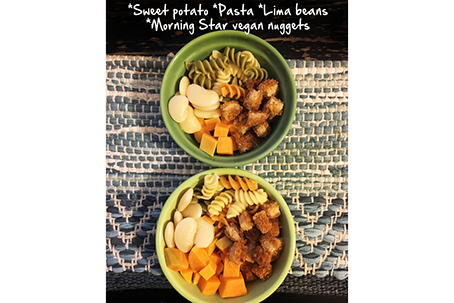
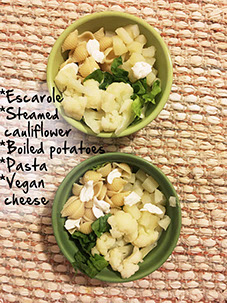

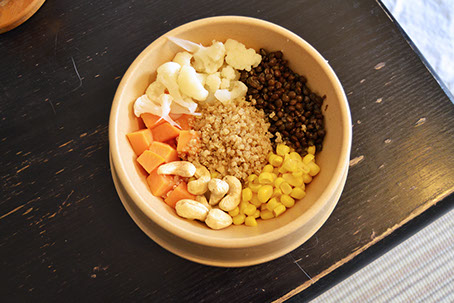


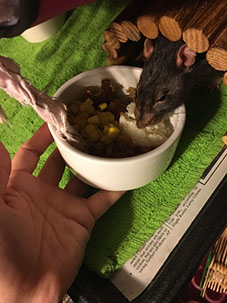
8 - 51
Foods to avoid are:
- ALL animal derived foods.
- Apple seeds. Apple seeds have a small amount of cyanide in them that can be harmful for rats.
- Avocado skin.
- Beat tops and Spinach. These can cause urinary tract problems and stones in the kidneys and bladder due to their extremely high levels of oxalates.
- All caffeinated and carbonated drinks.
- Candy. Like chocolate, candy is too sugary. Rats can have problems with digesting these foods.
- Chocolate. It is bad for rats due to high fat and sugar content.
- Dried corn. While cooked and raw corn is okay, dried corn is not. It contains fungal contaminates that can lead to liver cancer in rats.
- Green bananas. Ripe bananas are fine (and often a fave!), but green bananas inhibit starch digestion enzymes.
- Green potato skins and eyes. These contain solanine, a toxin for rats.
- Hamster food. Hamster food is too high in fats for our ratty friends.
- Oranges or other citrus fruits are harmful to male rats.
- Peanut butter.
- Peanuts and other fatty seeds unless feeding recently weaned young rats, or expecting mother rats.
- Raw vegetables. If it unsafe for you to eat unless cooked, it is also unsafe for our ratty friends.


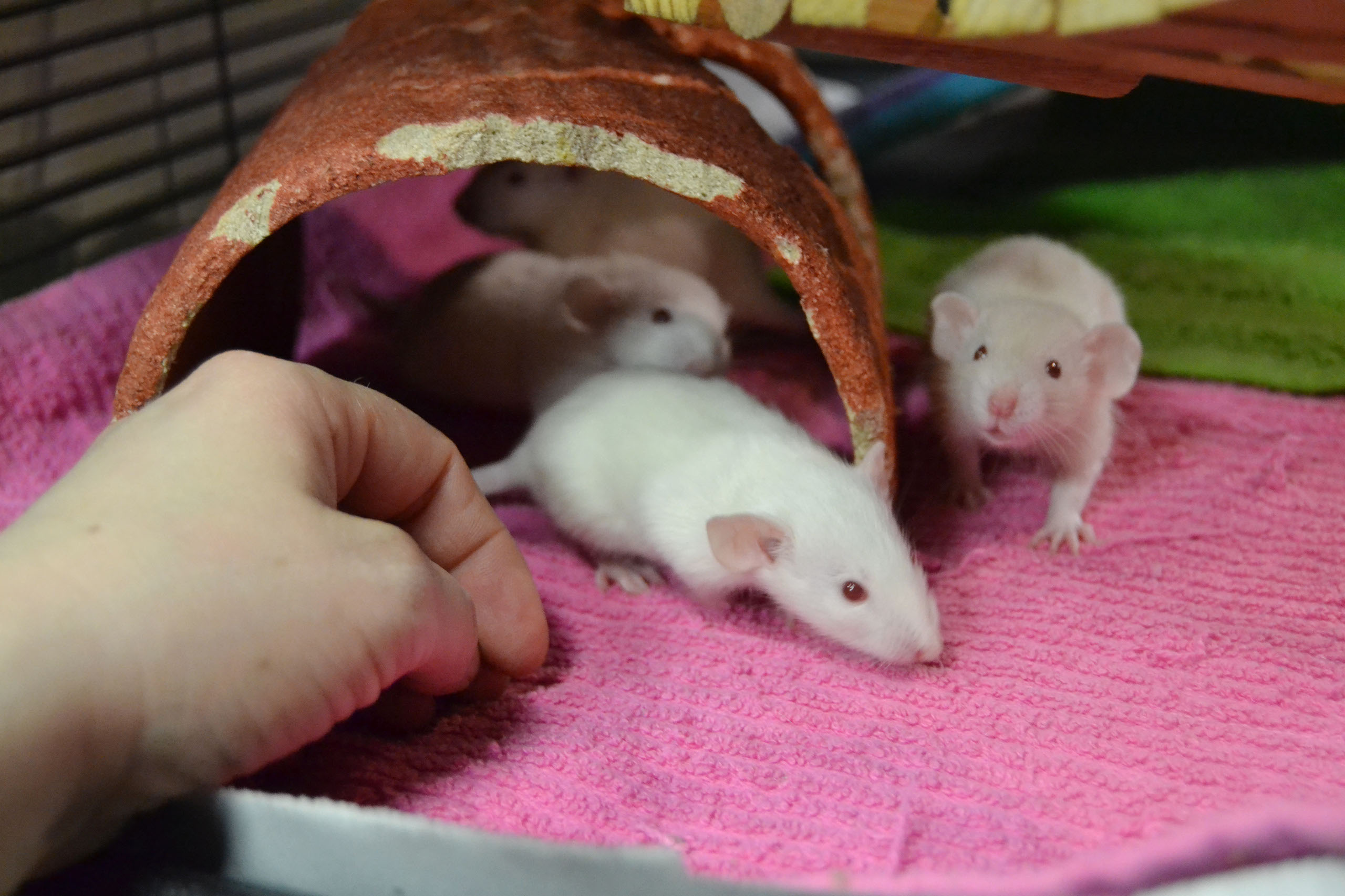
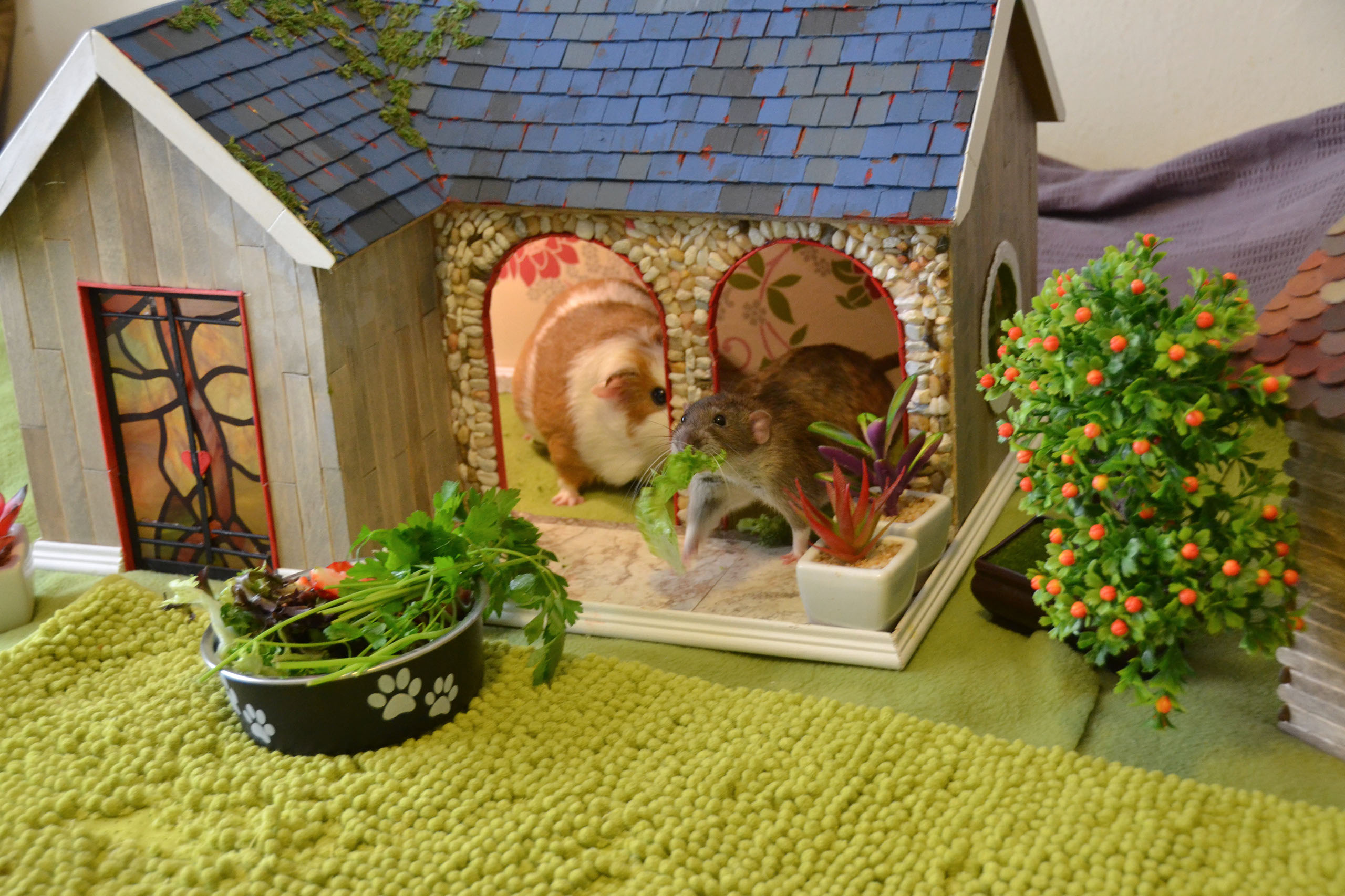
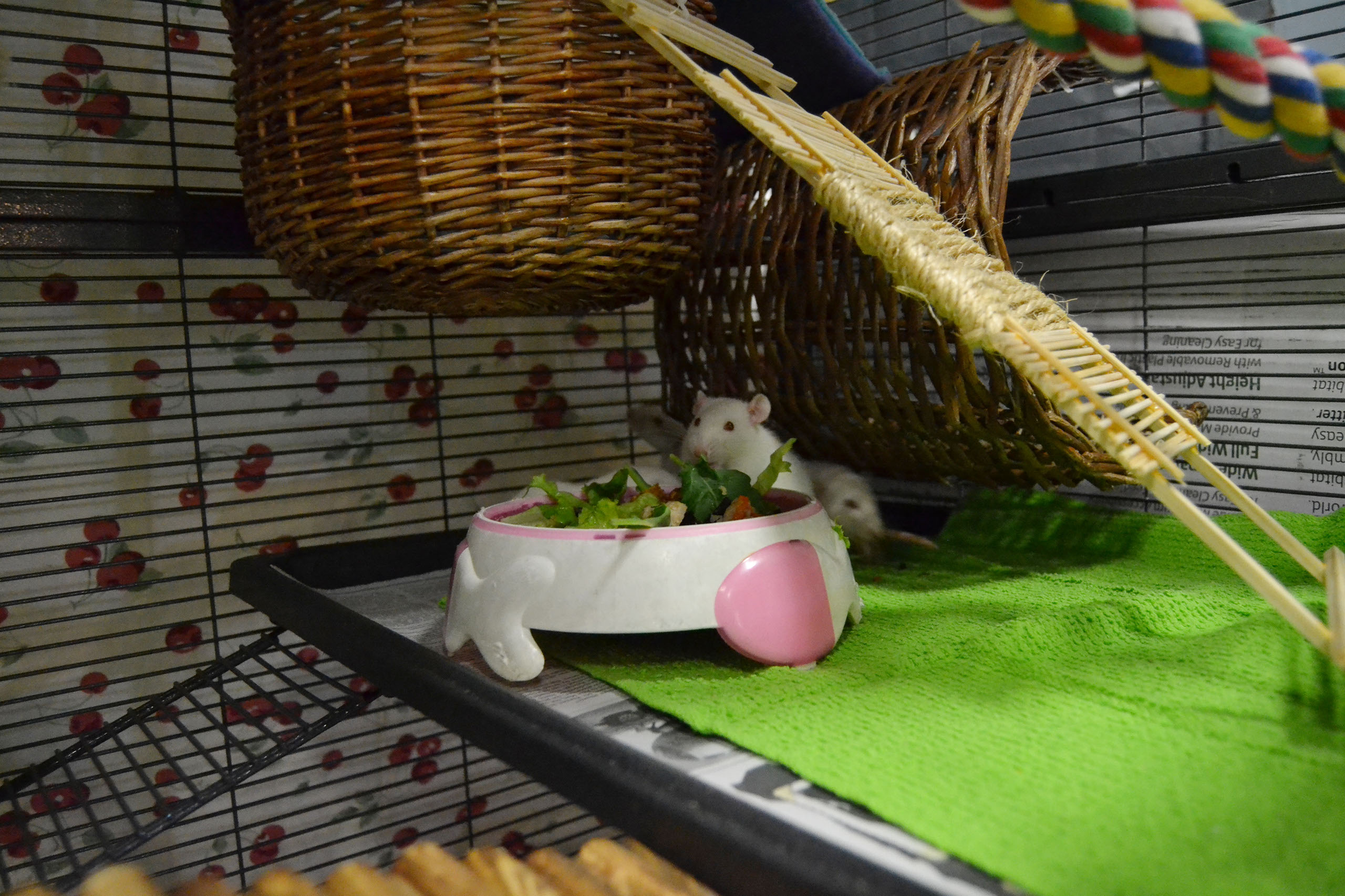
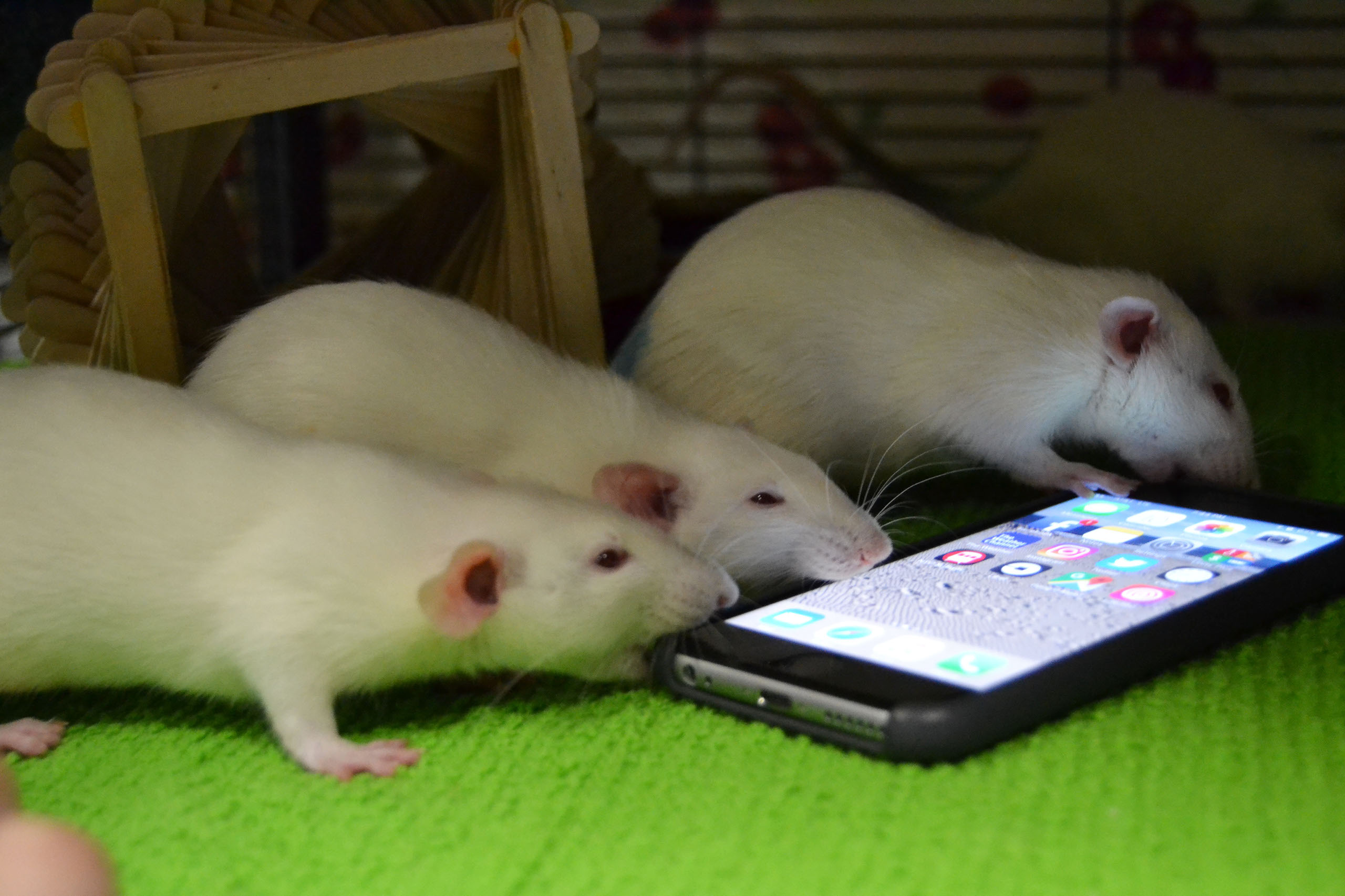
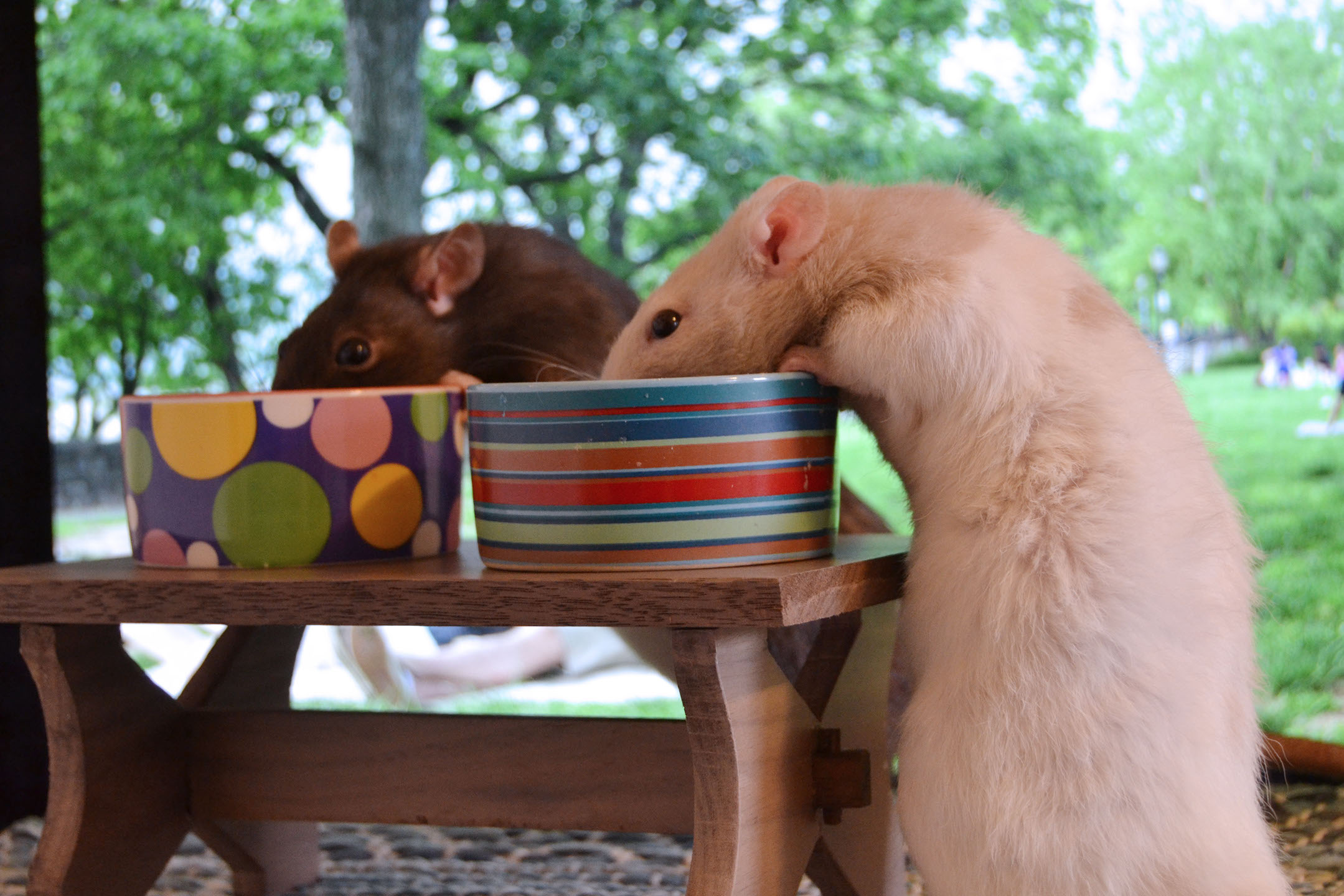
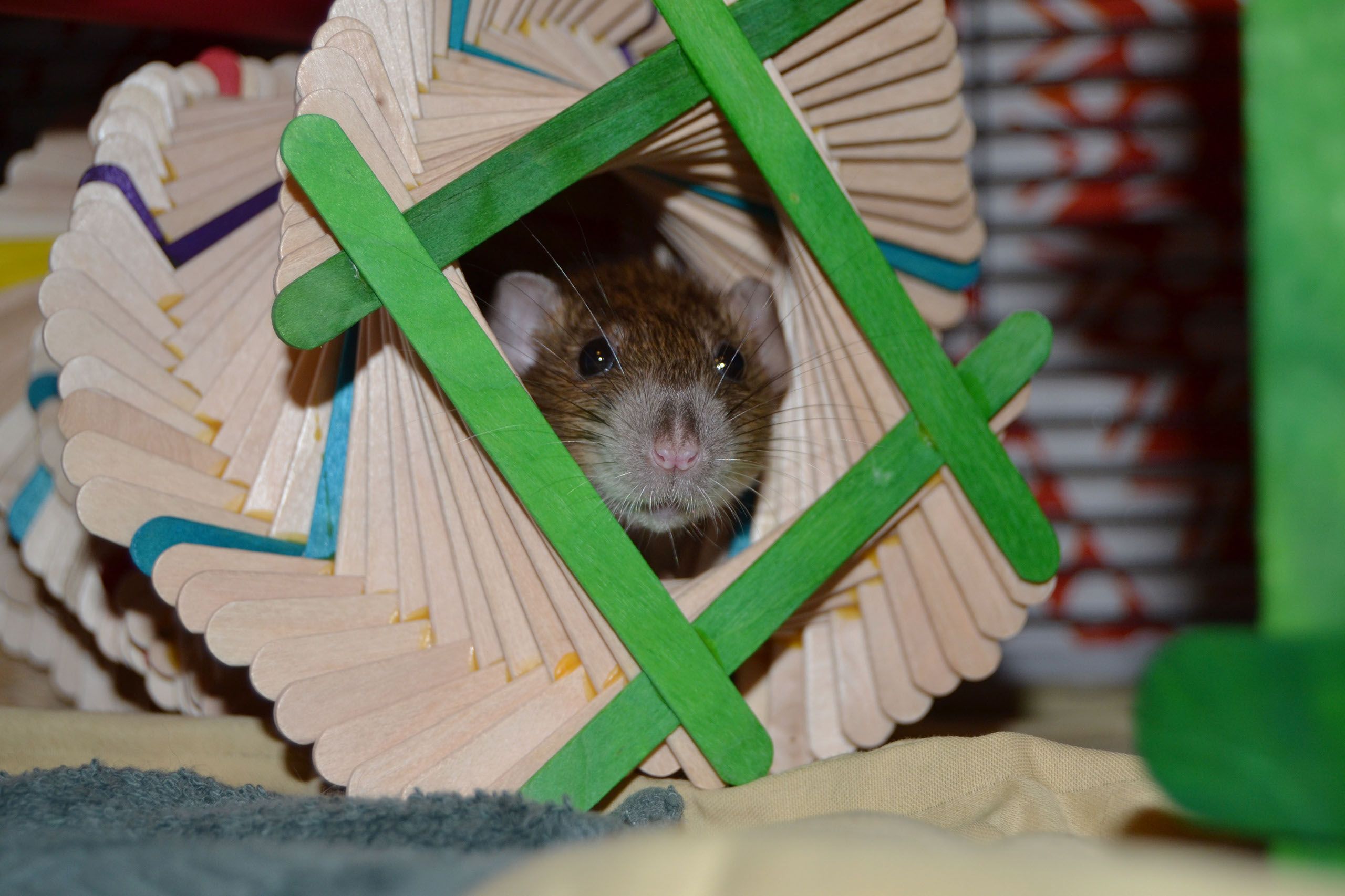
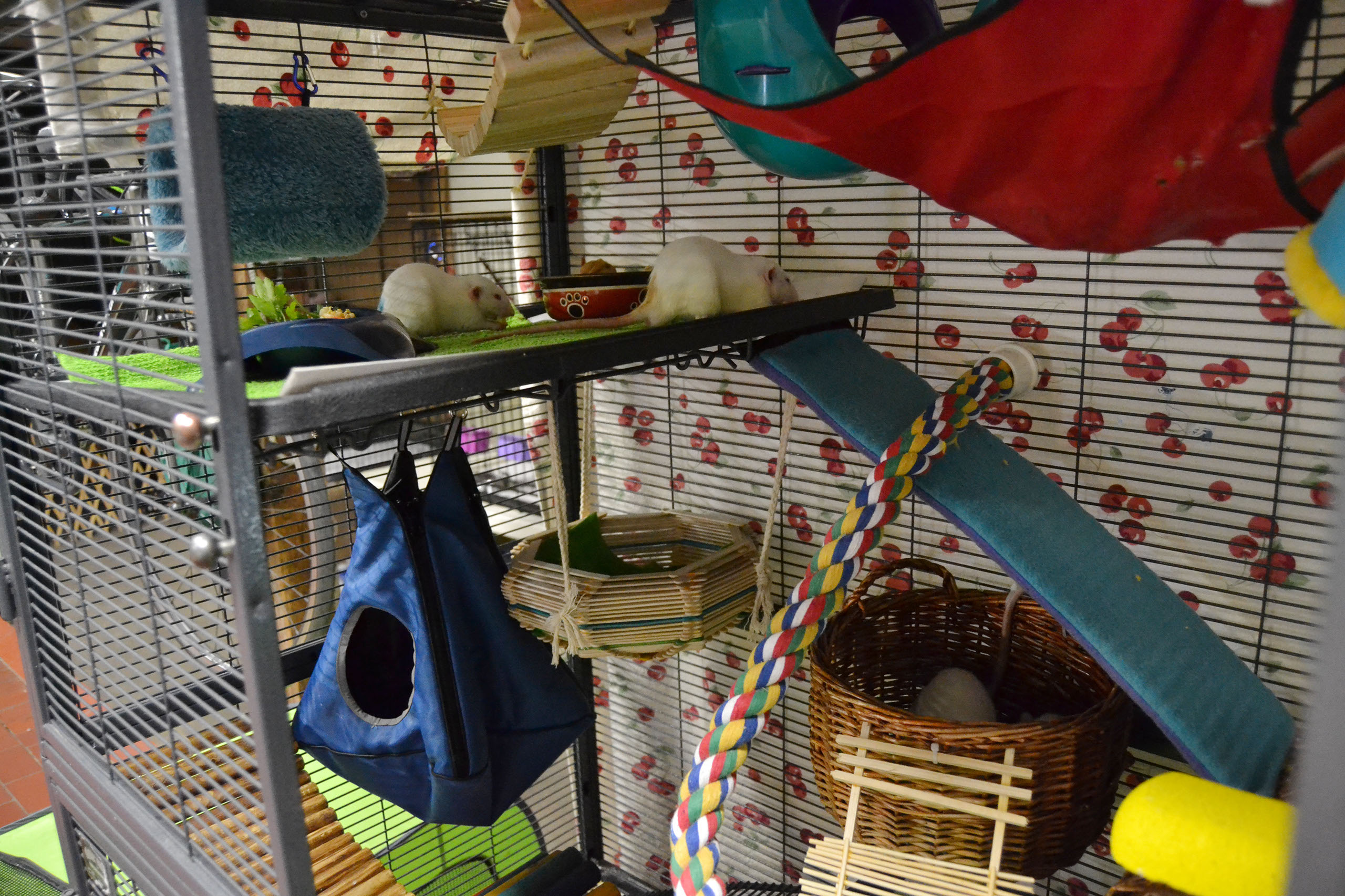
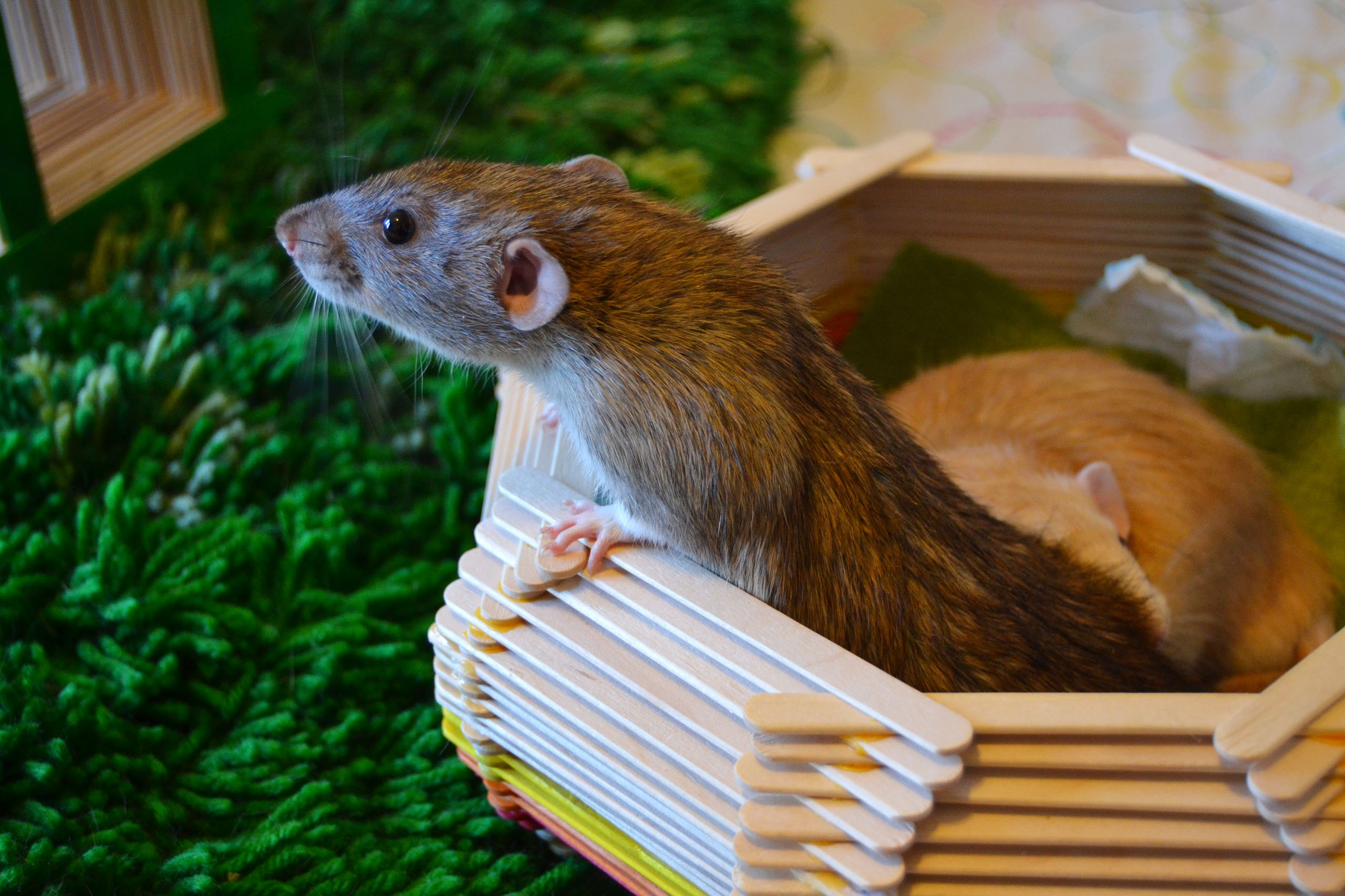

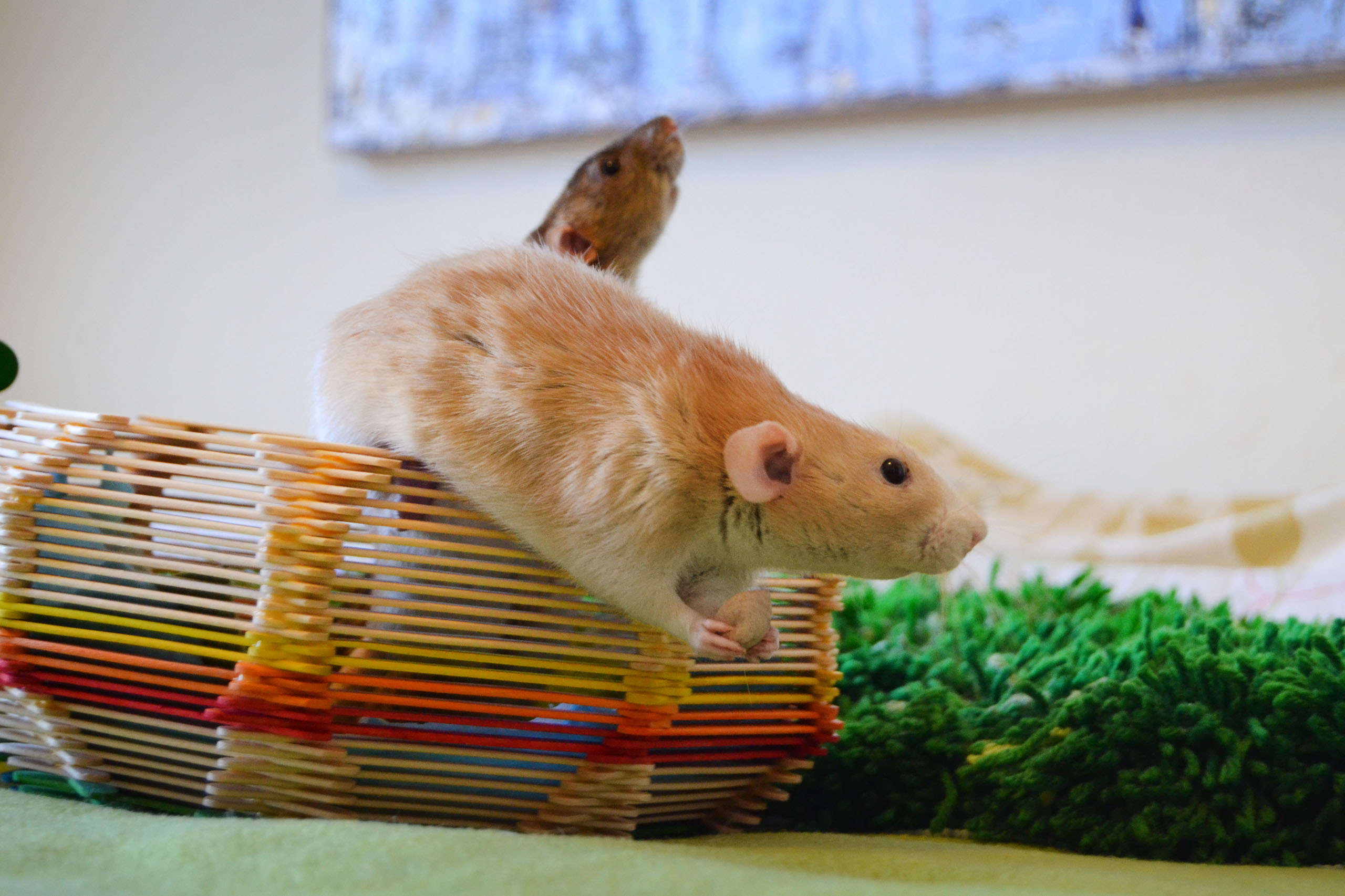
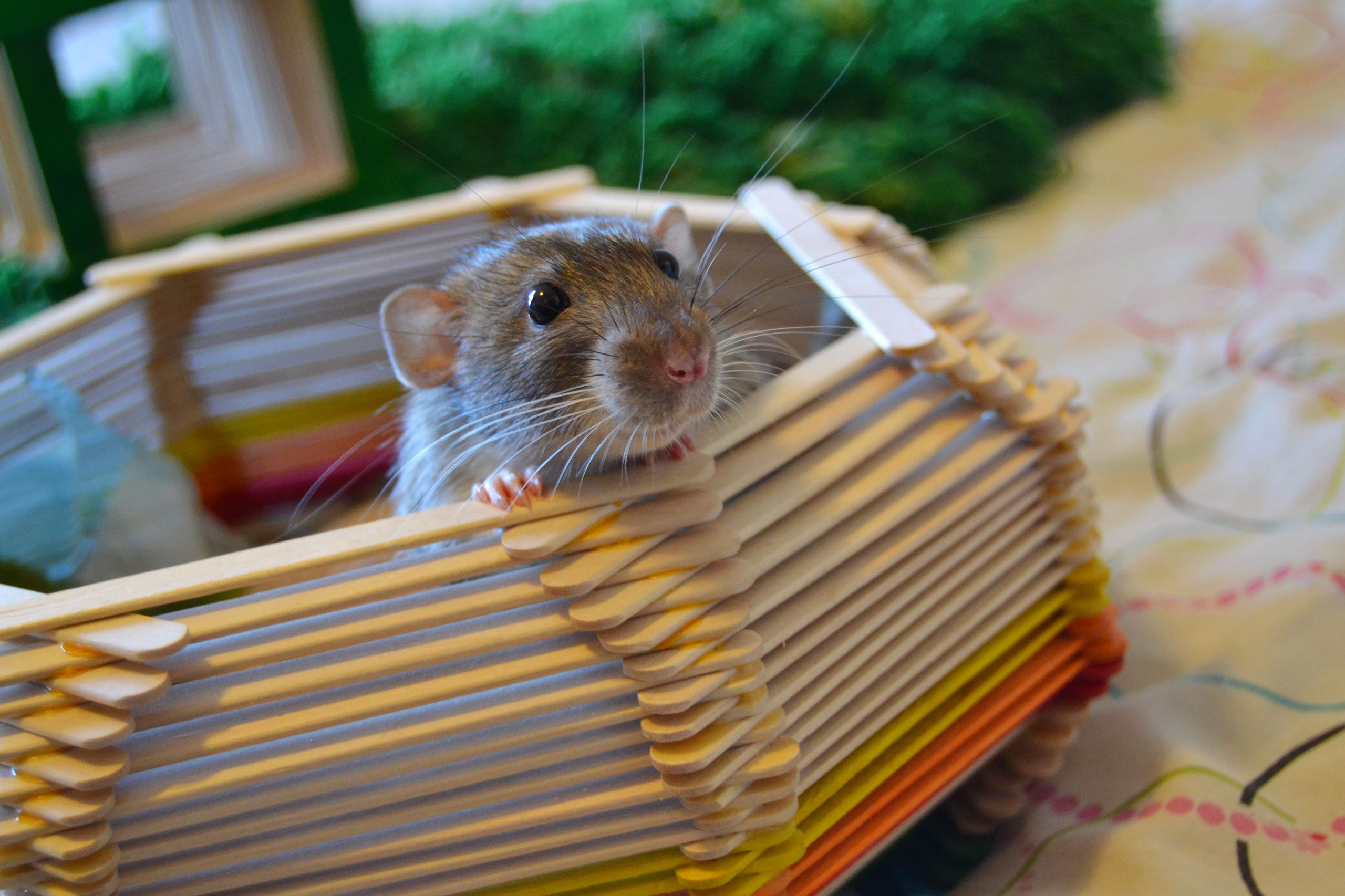
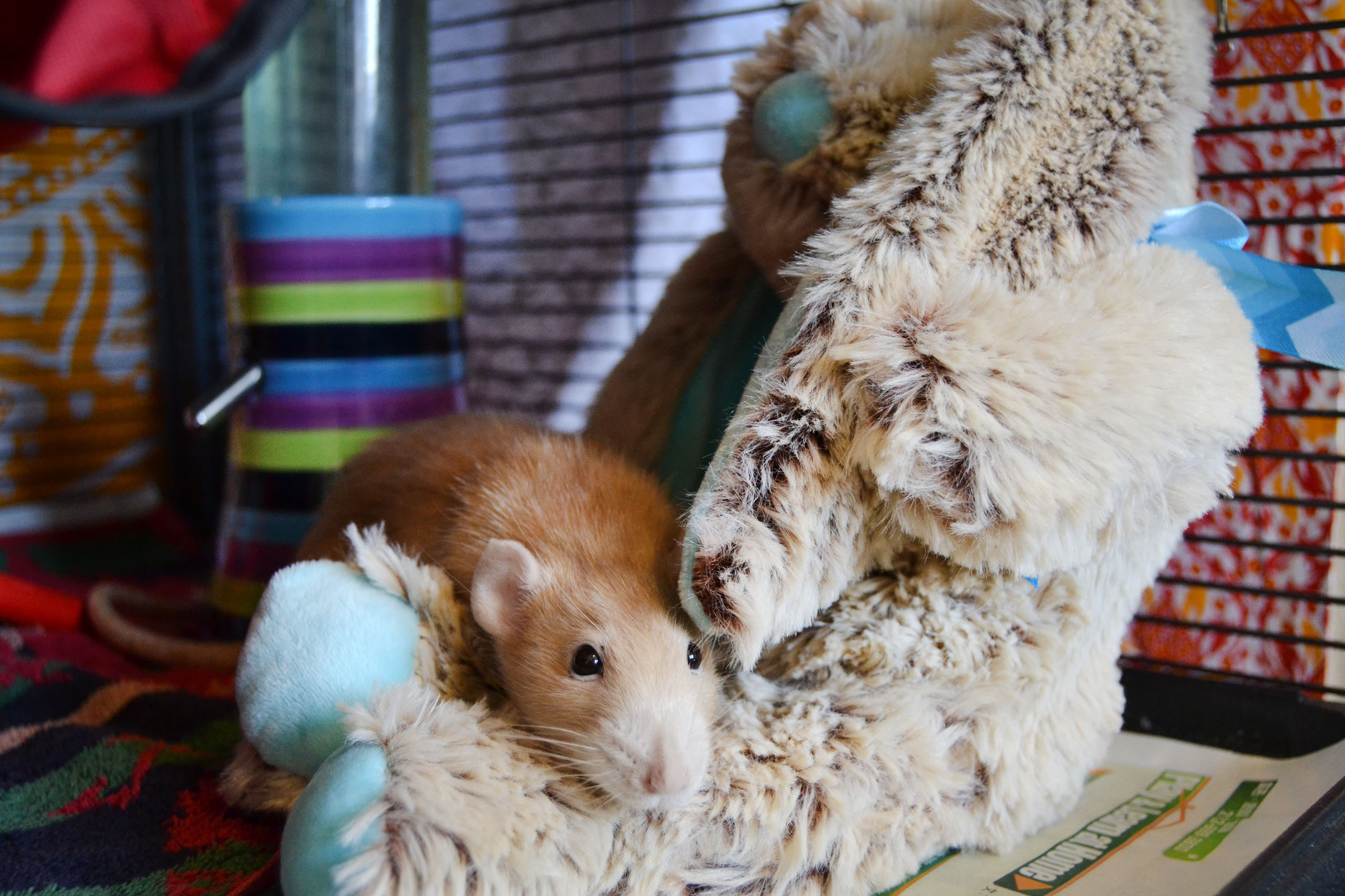
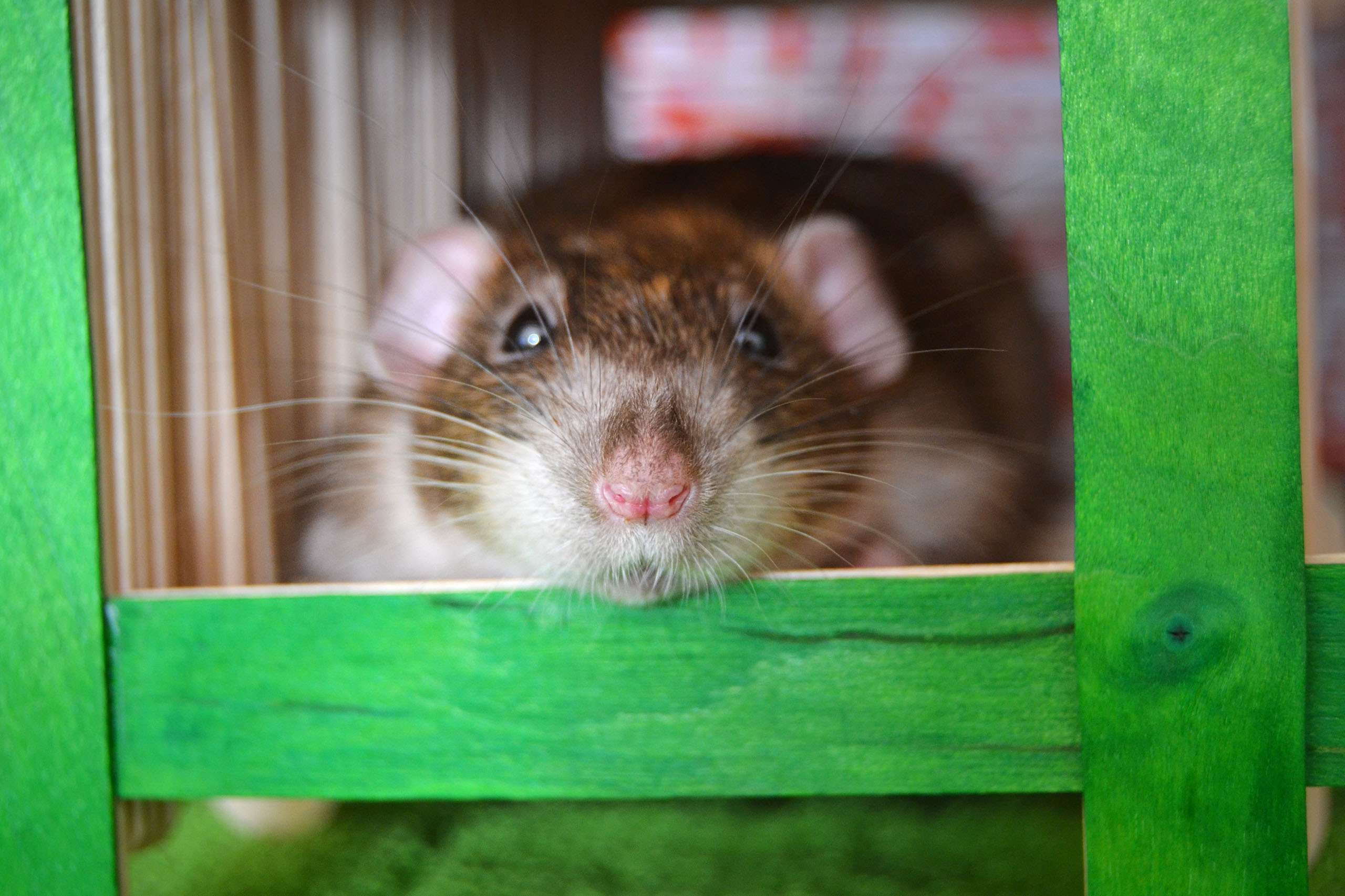
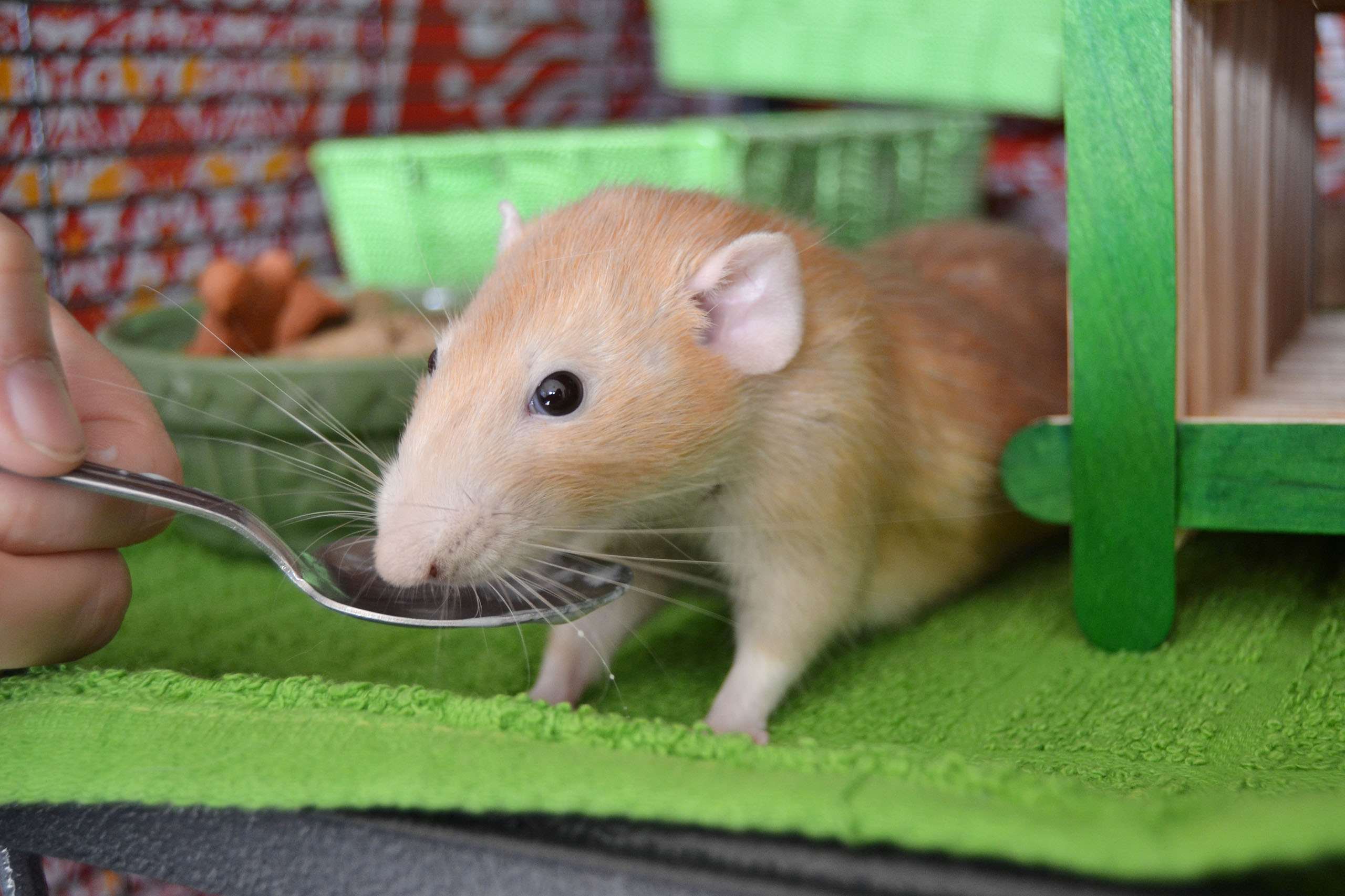
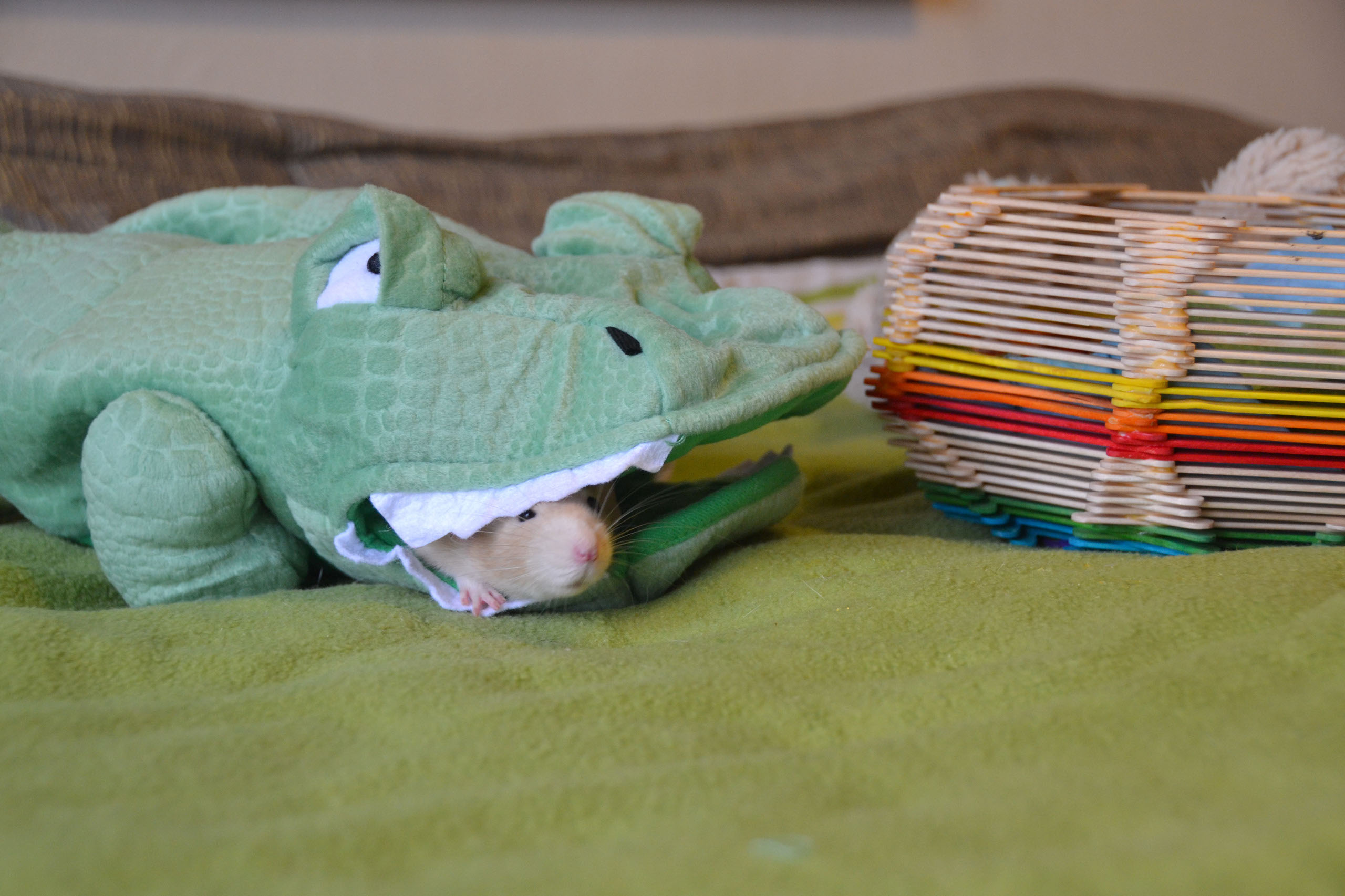
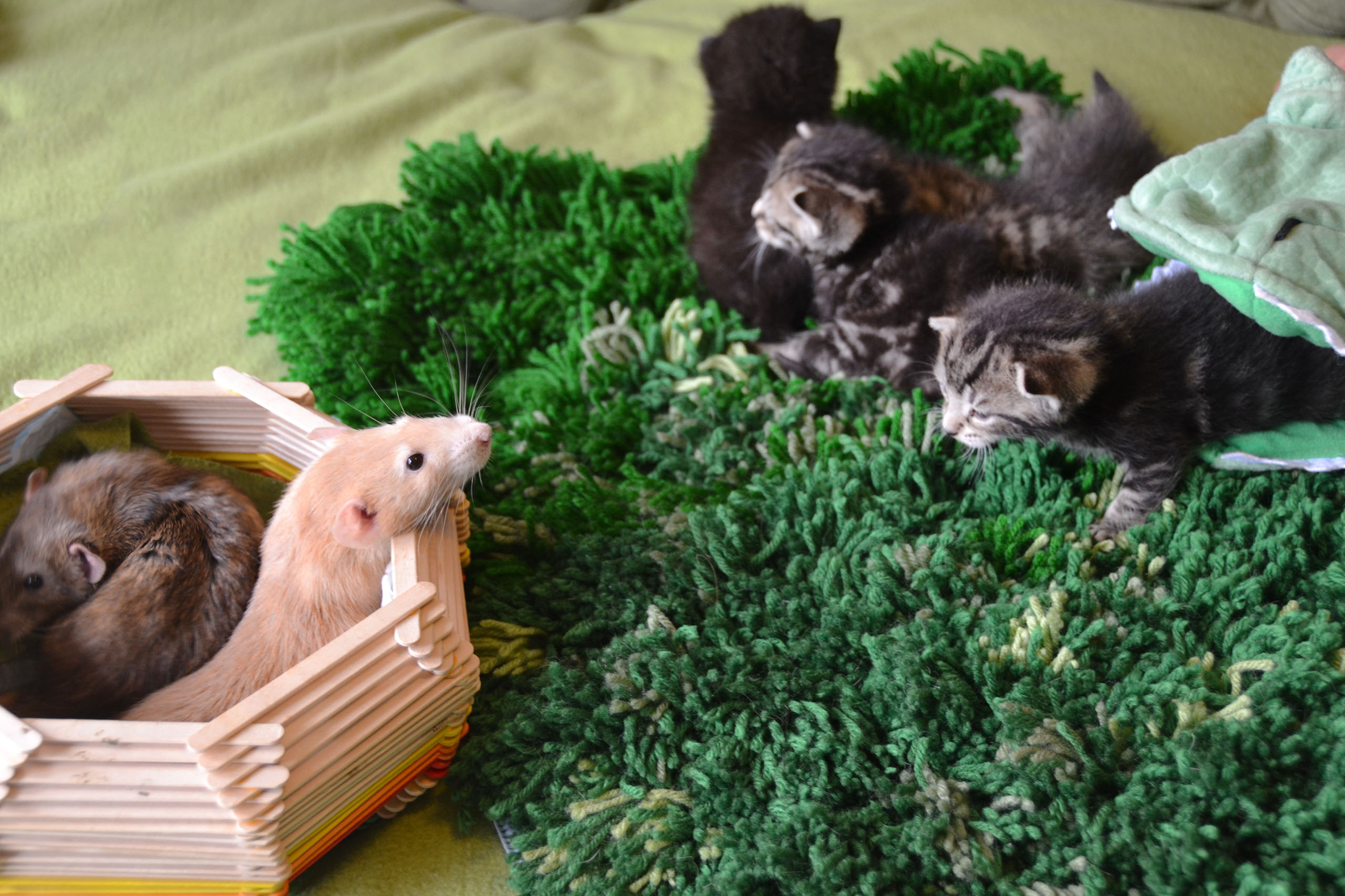
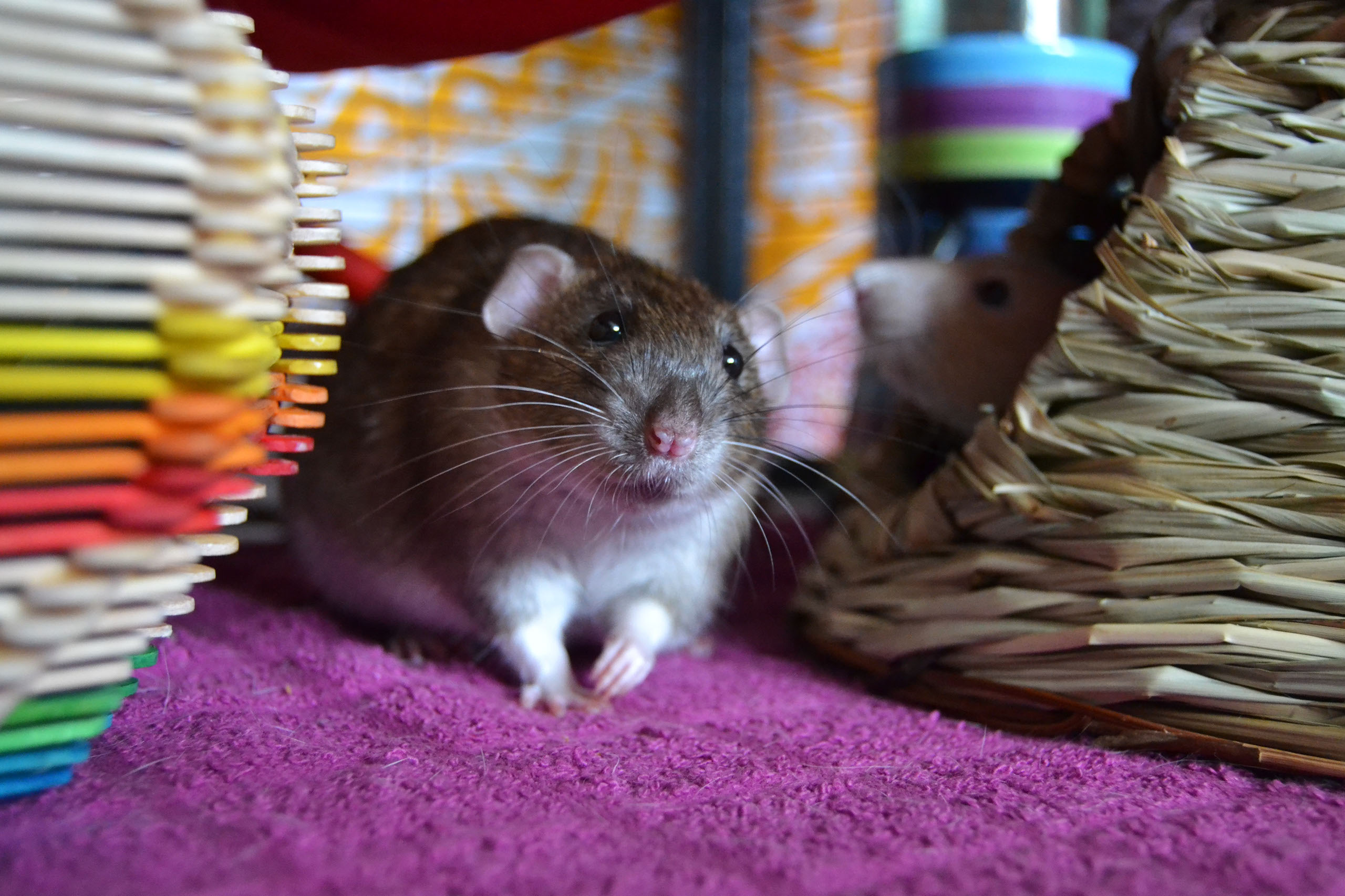
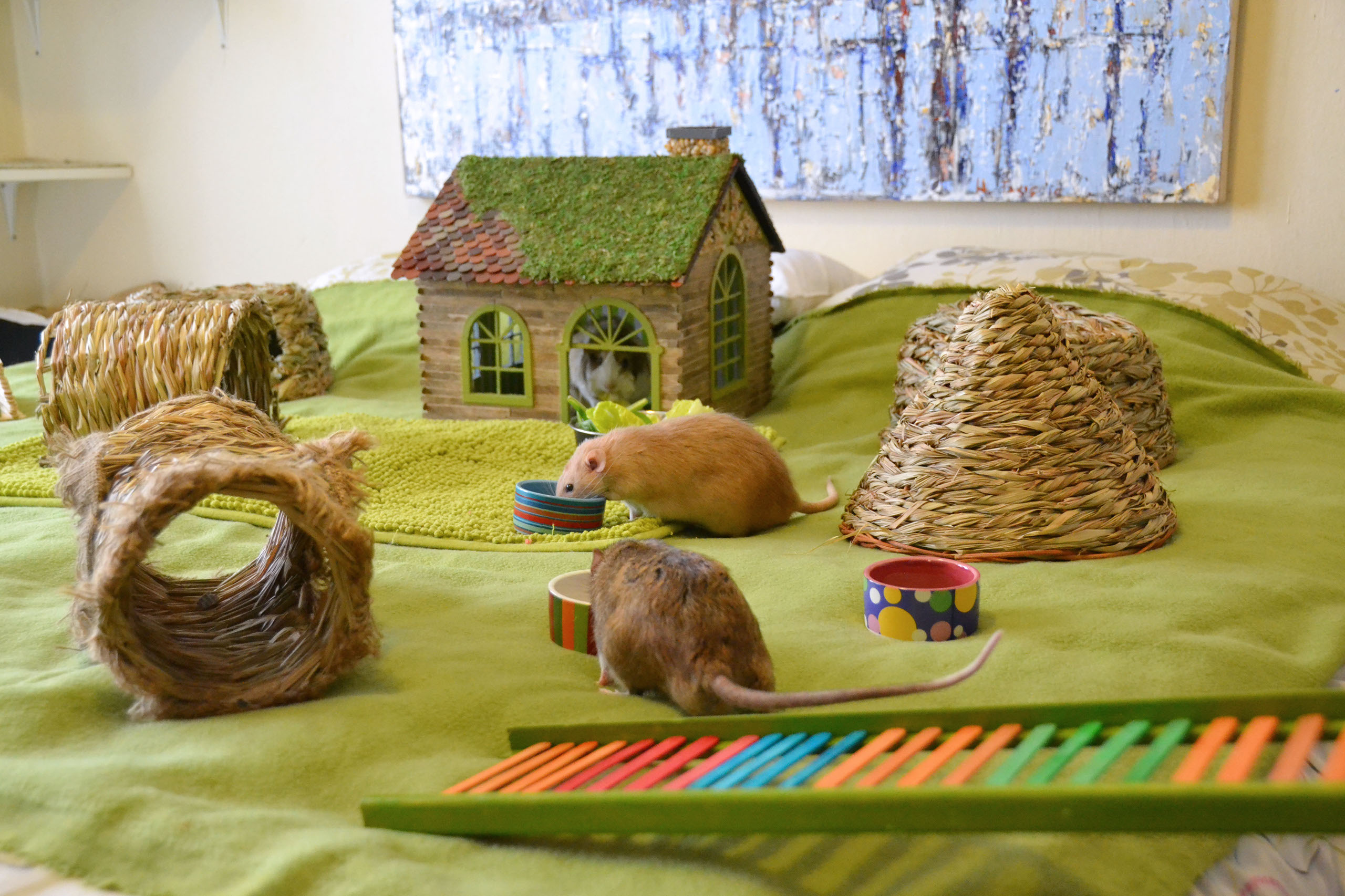
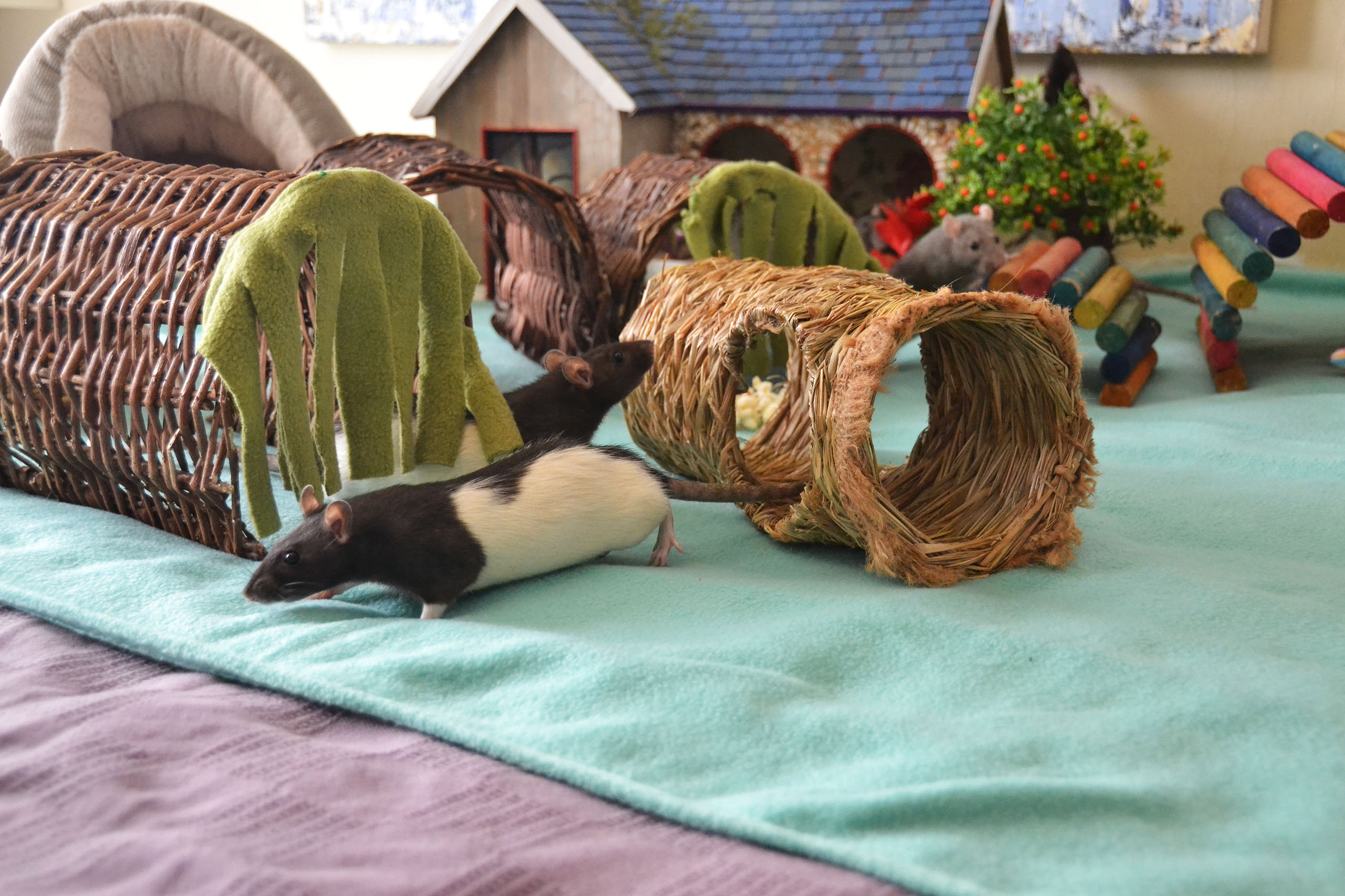
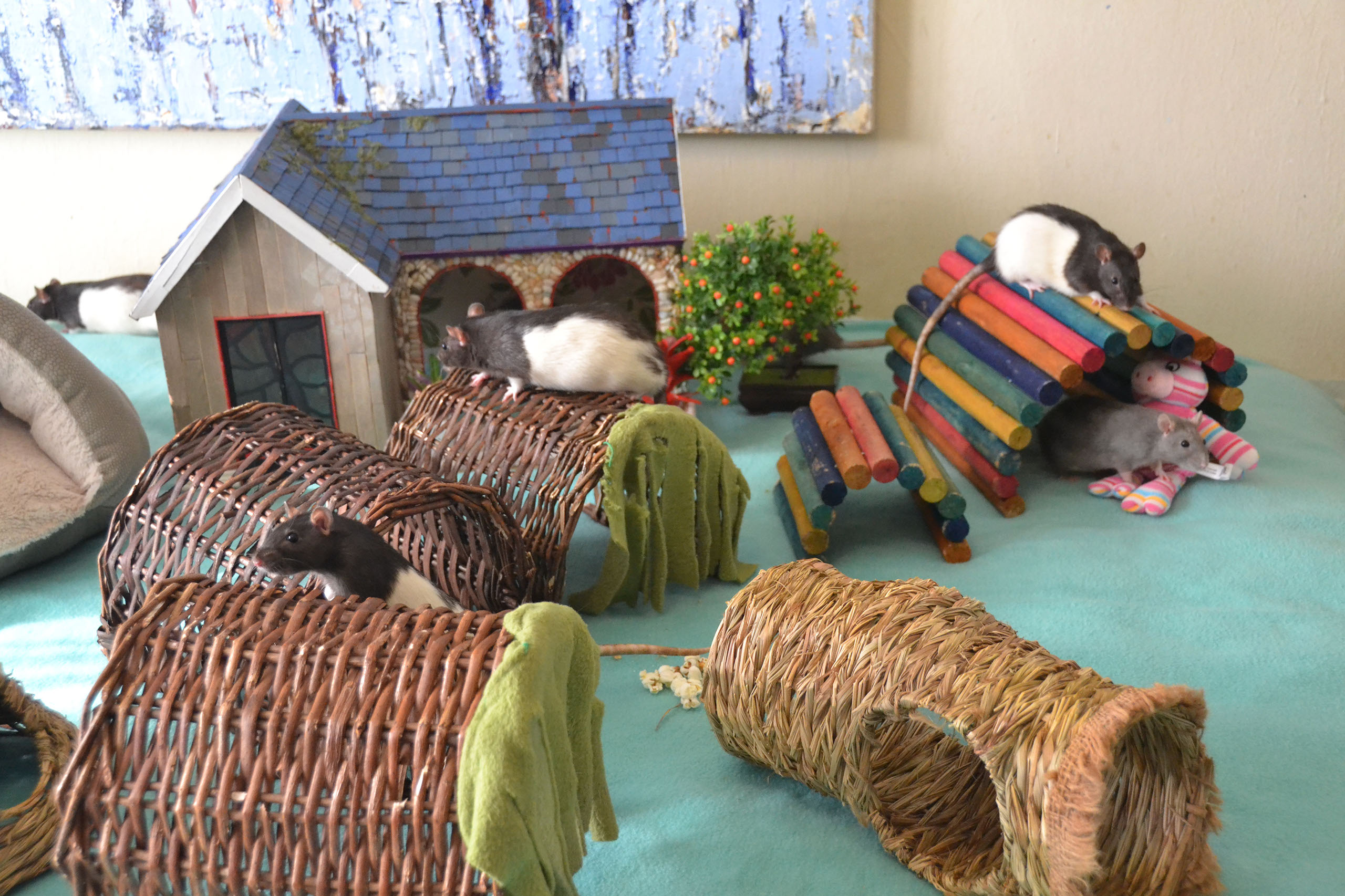
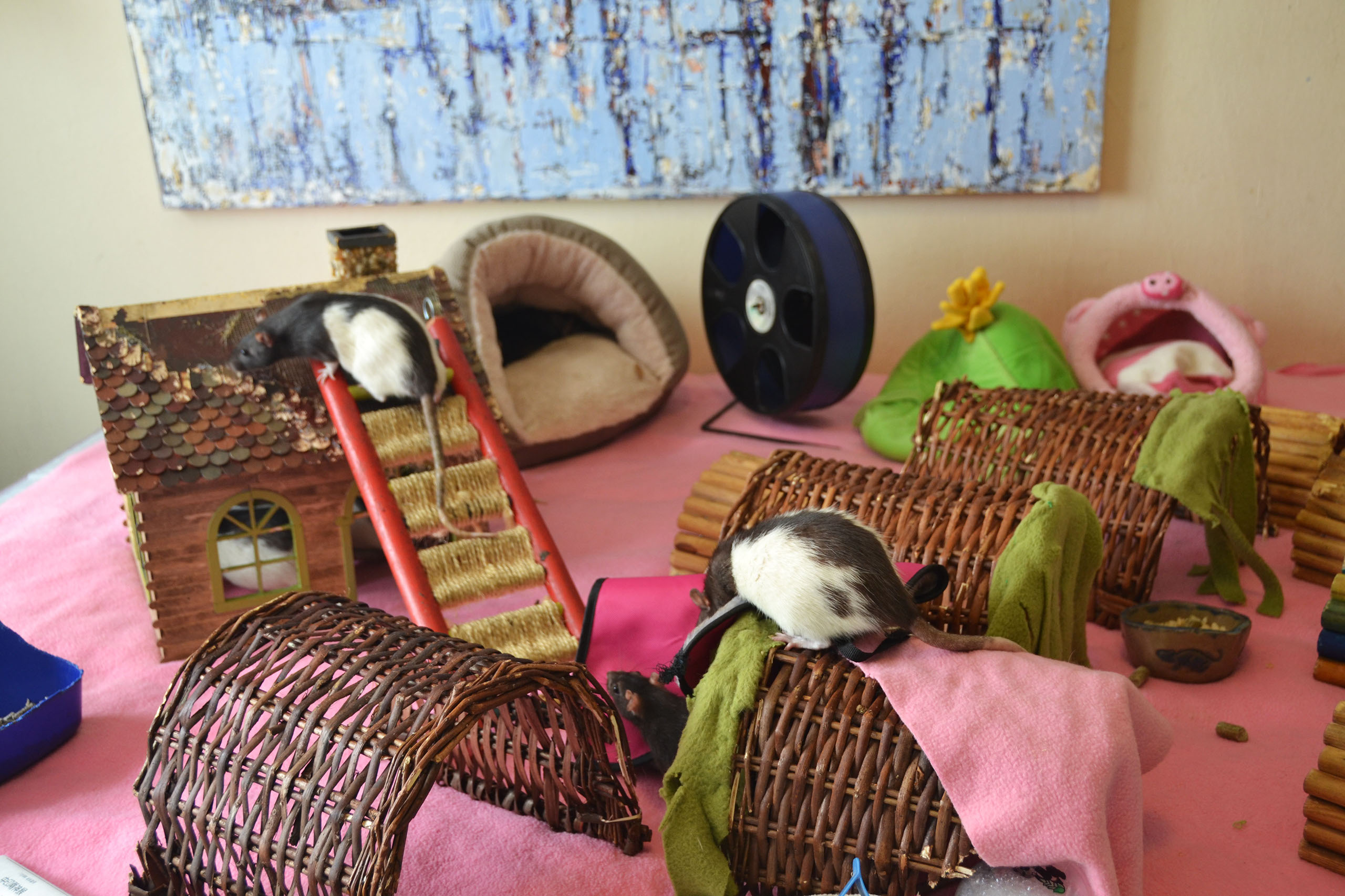
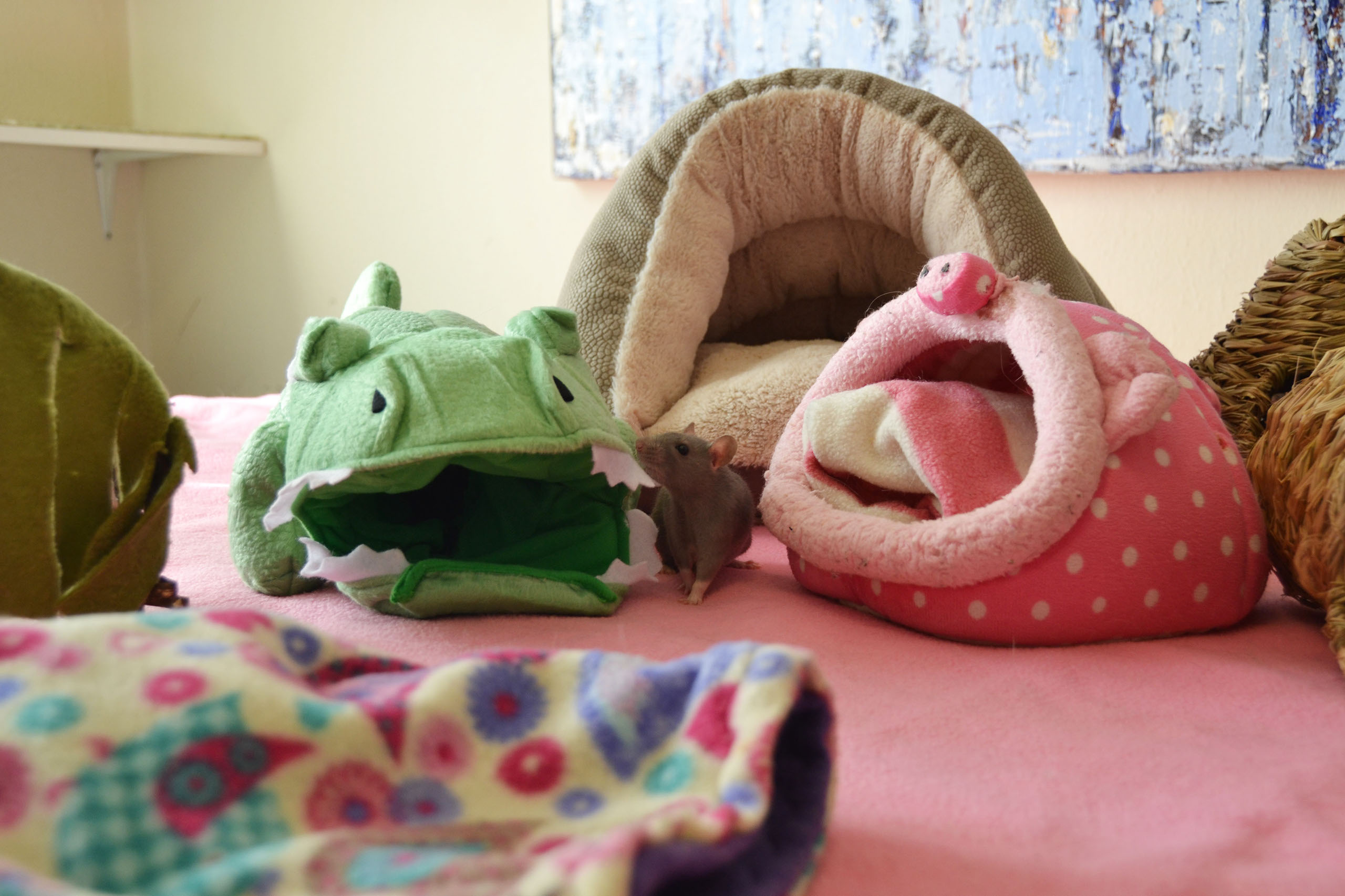
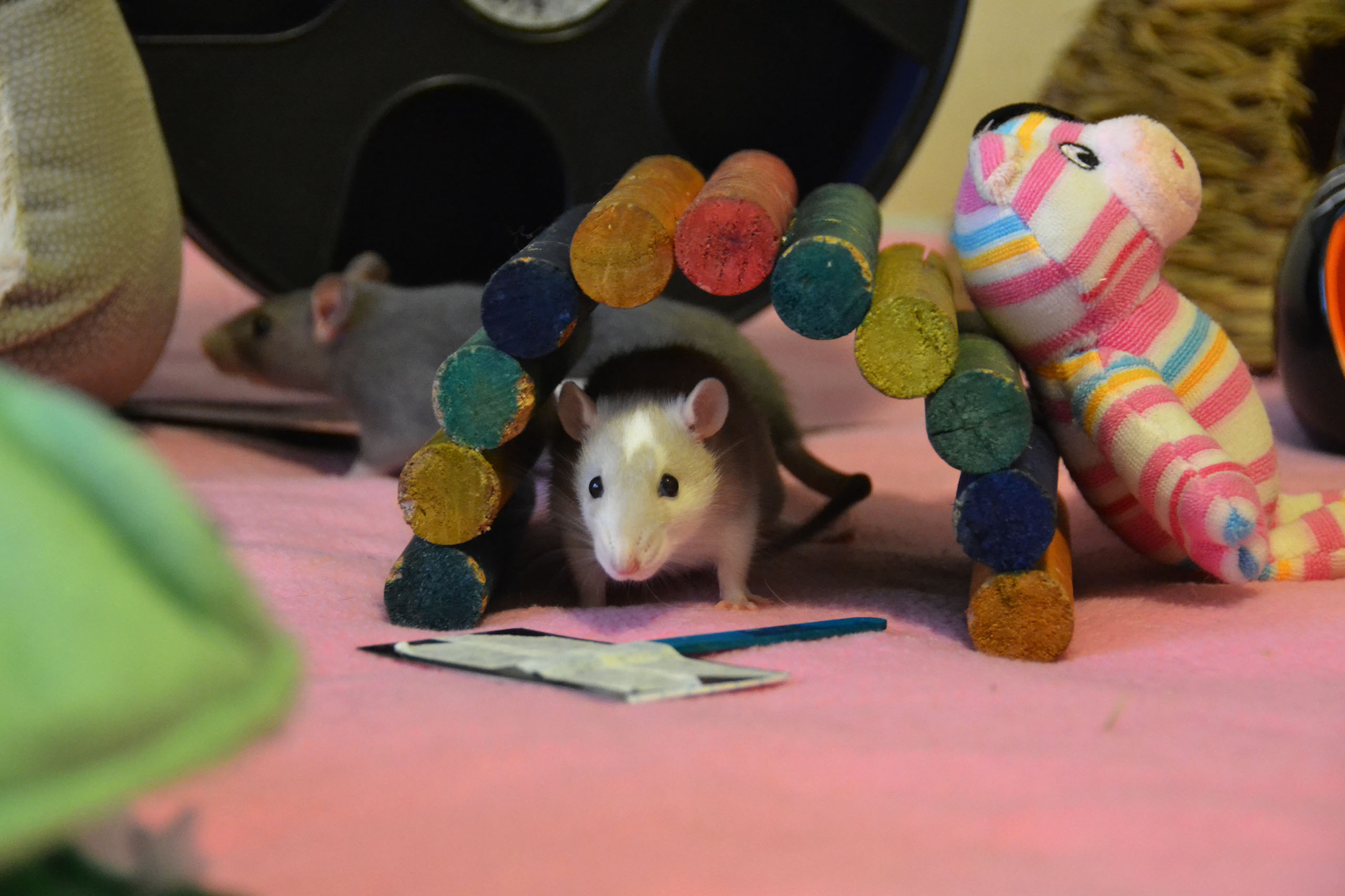
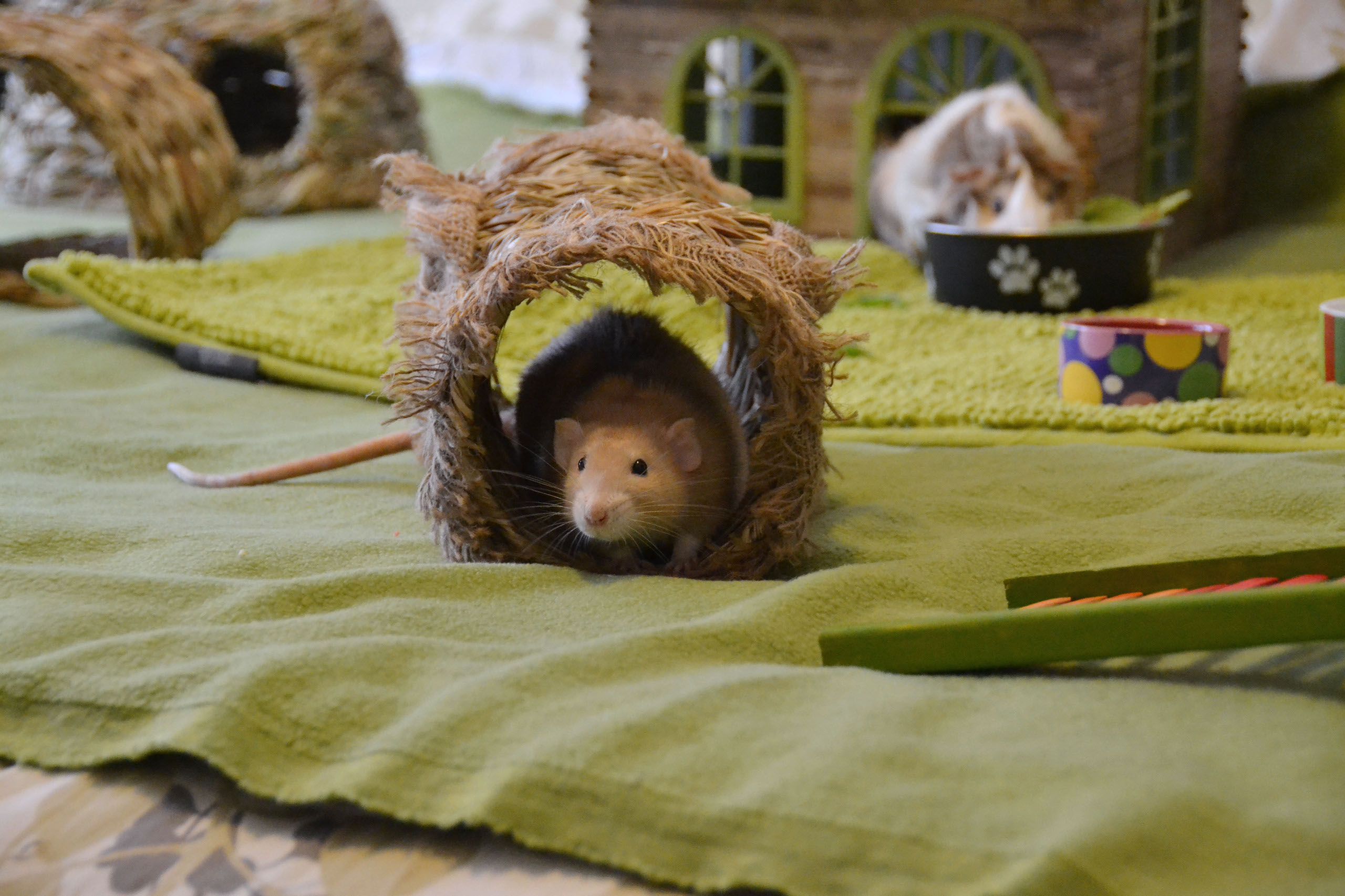
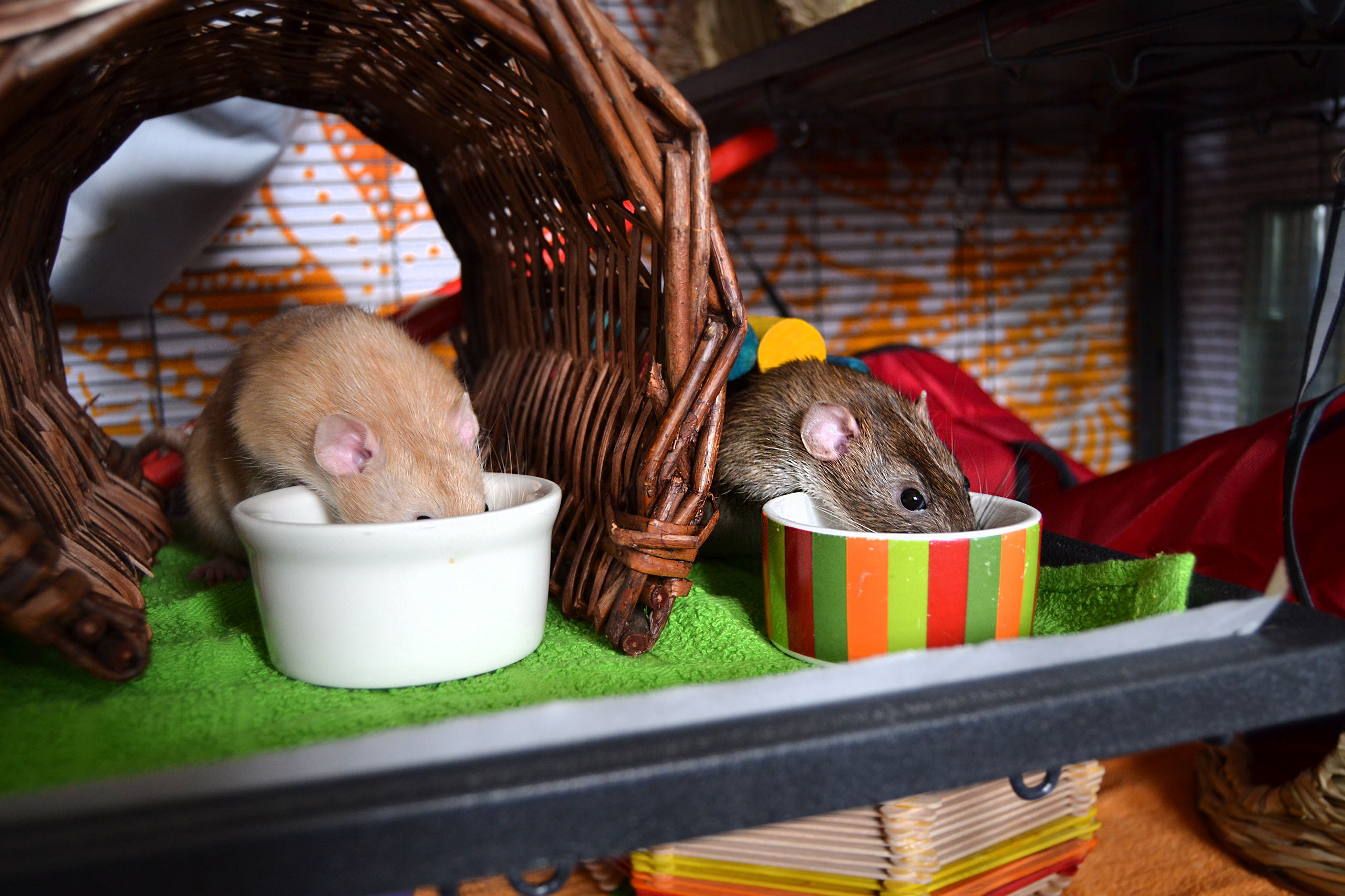
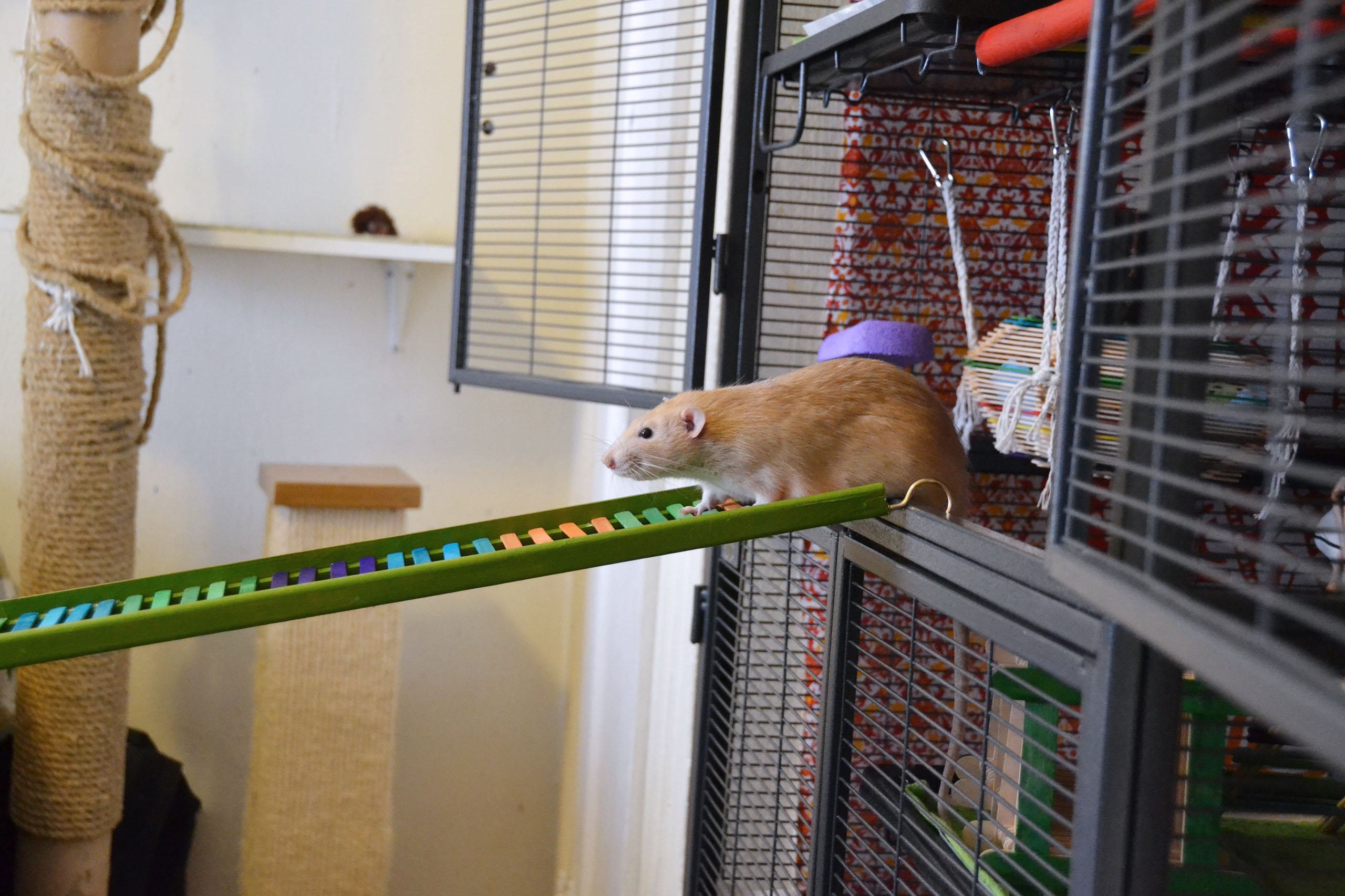
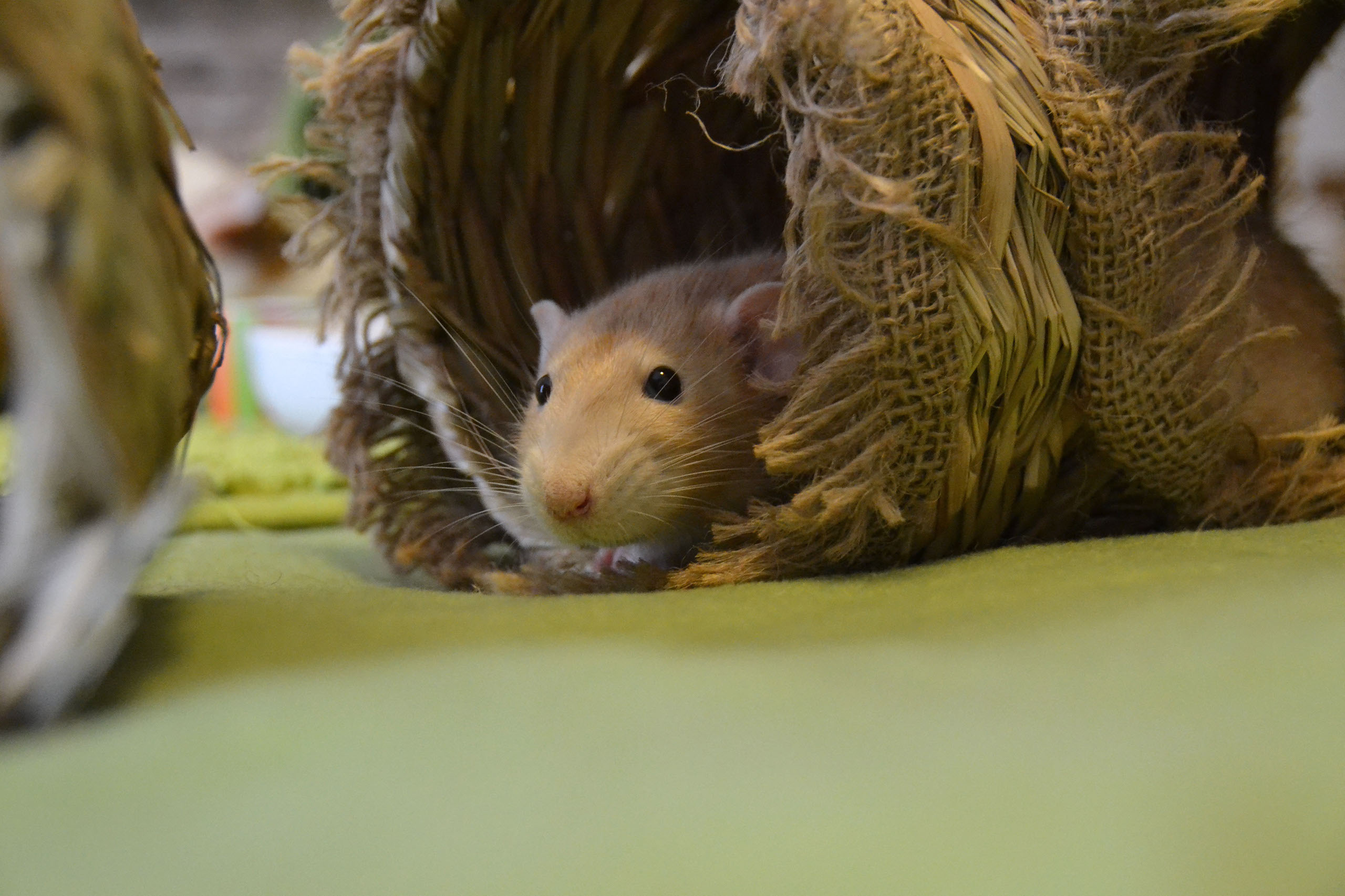
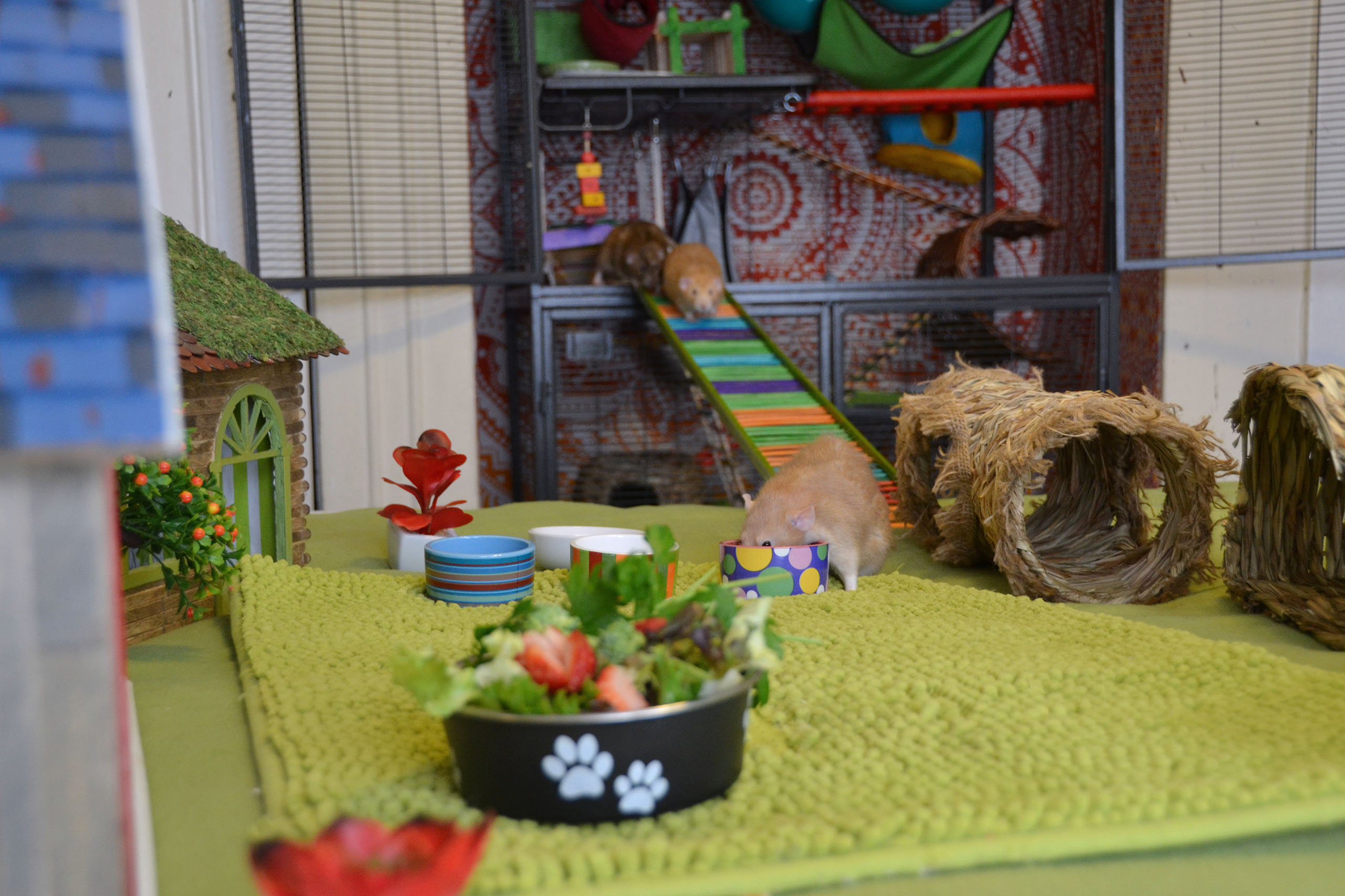
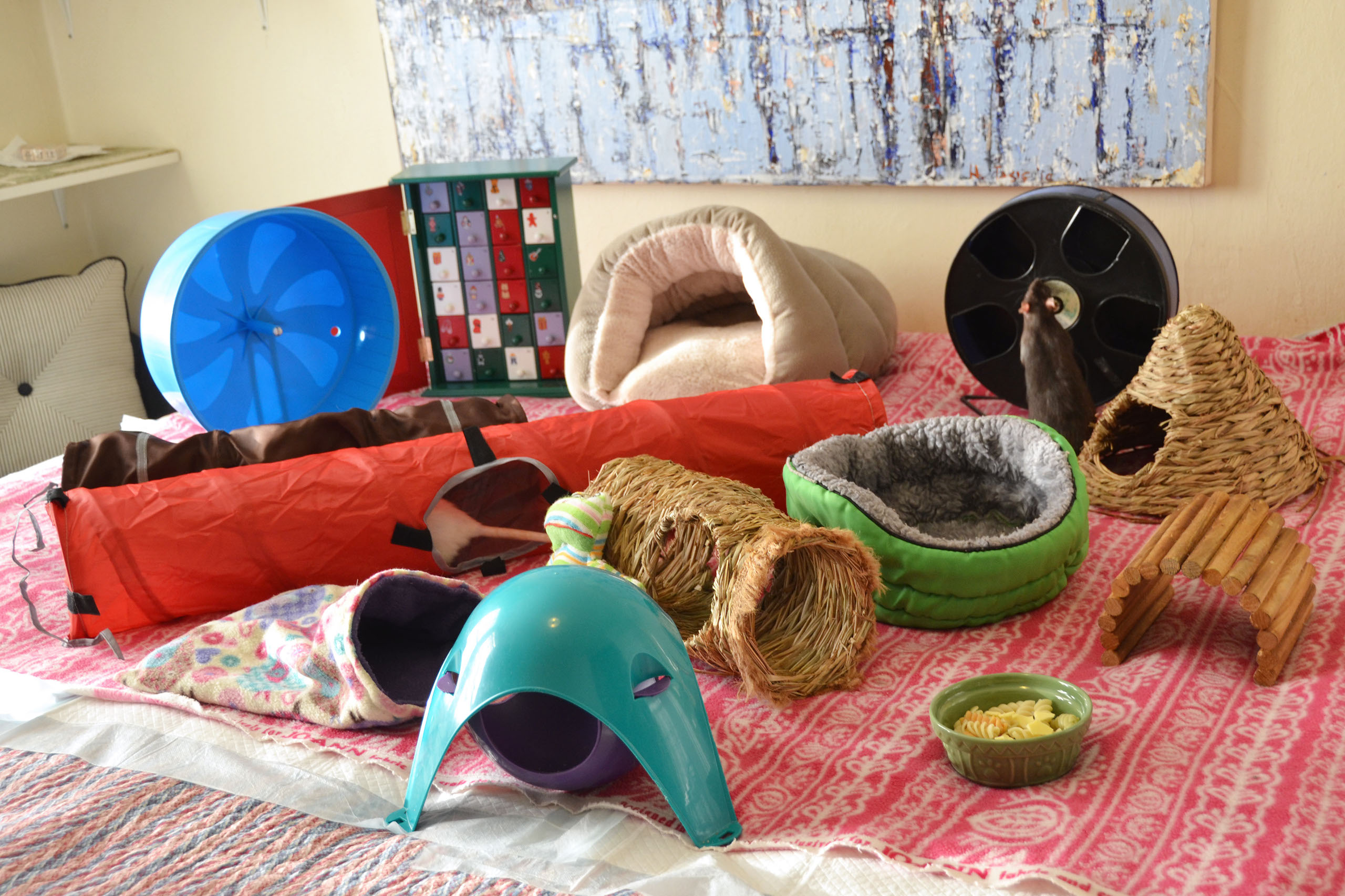
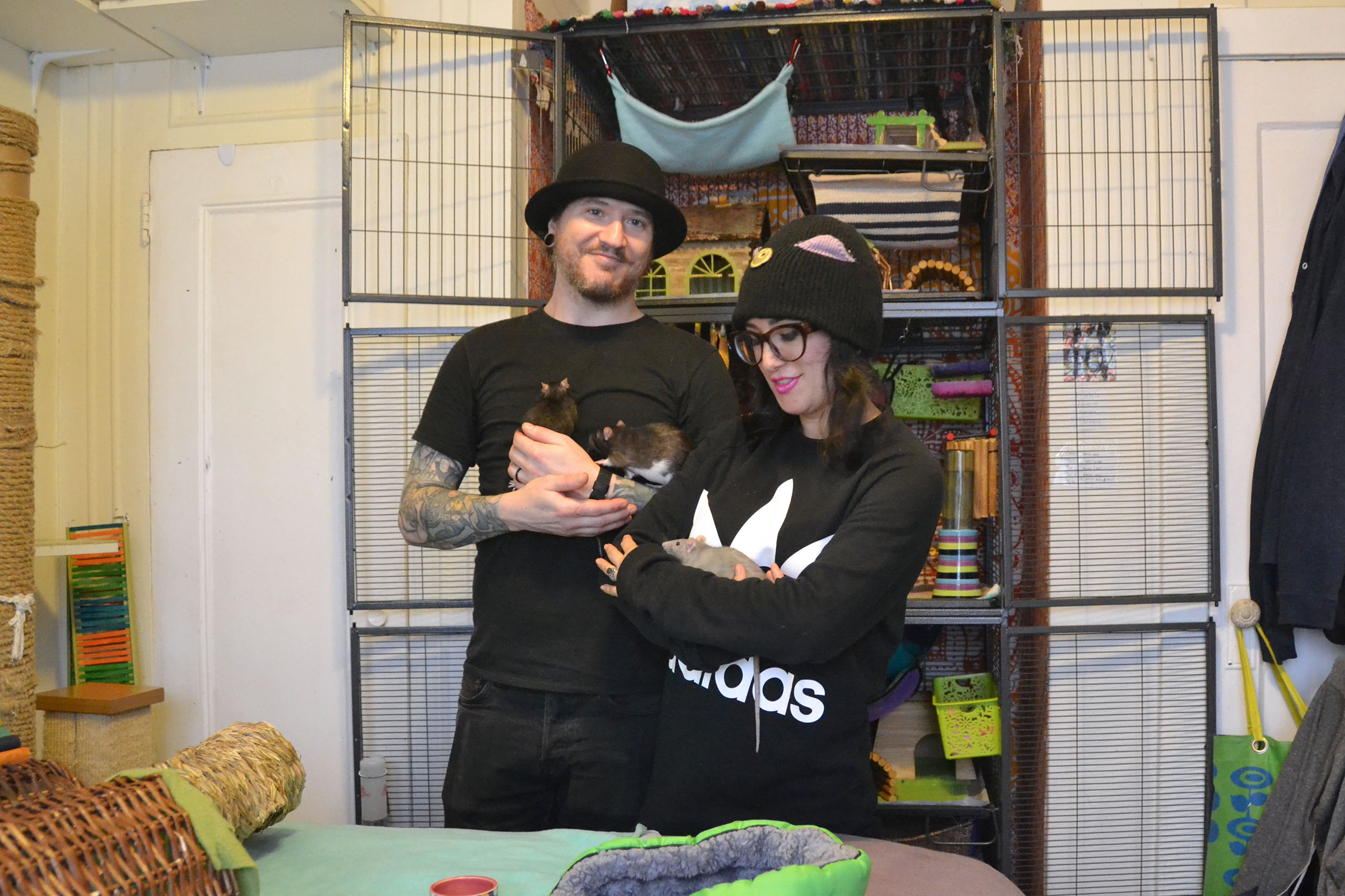
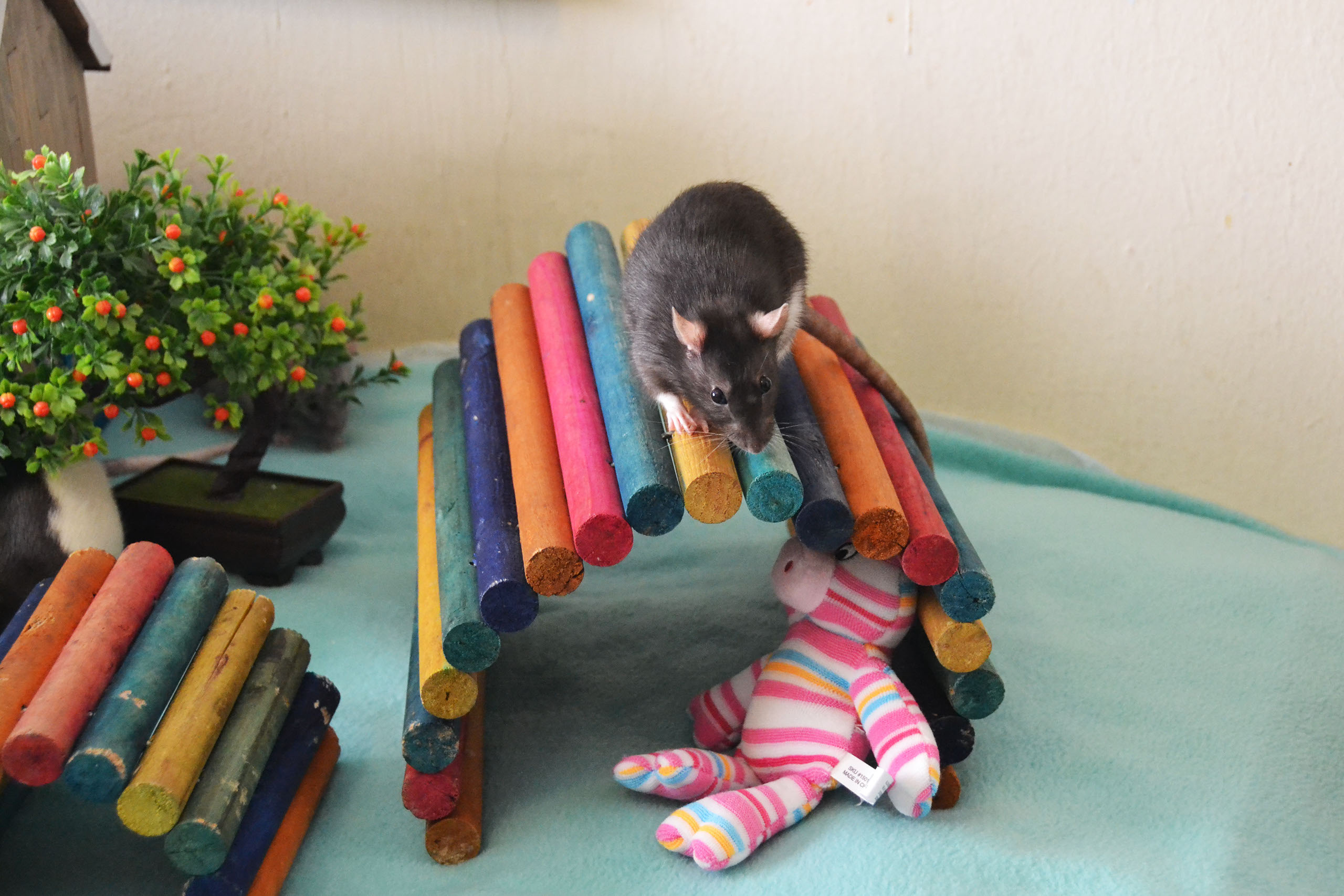
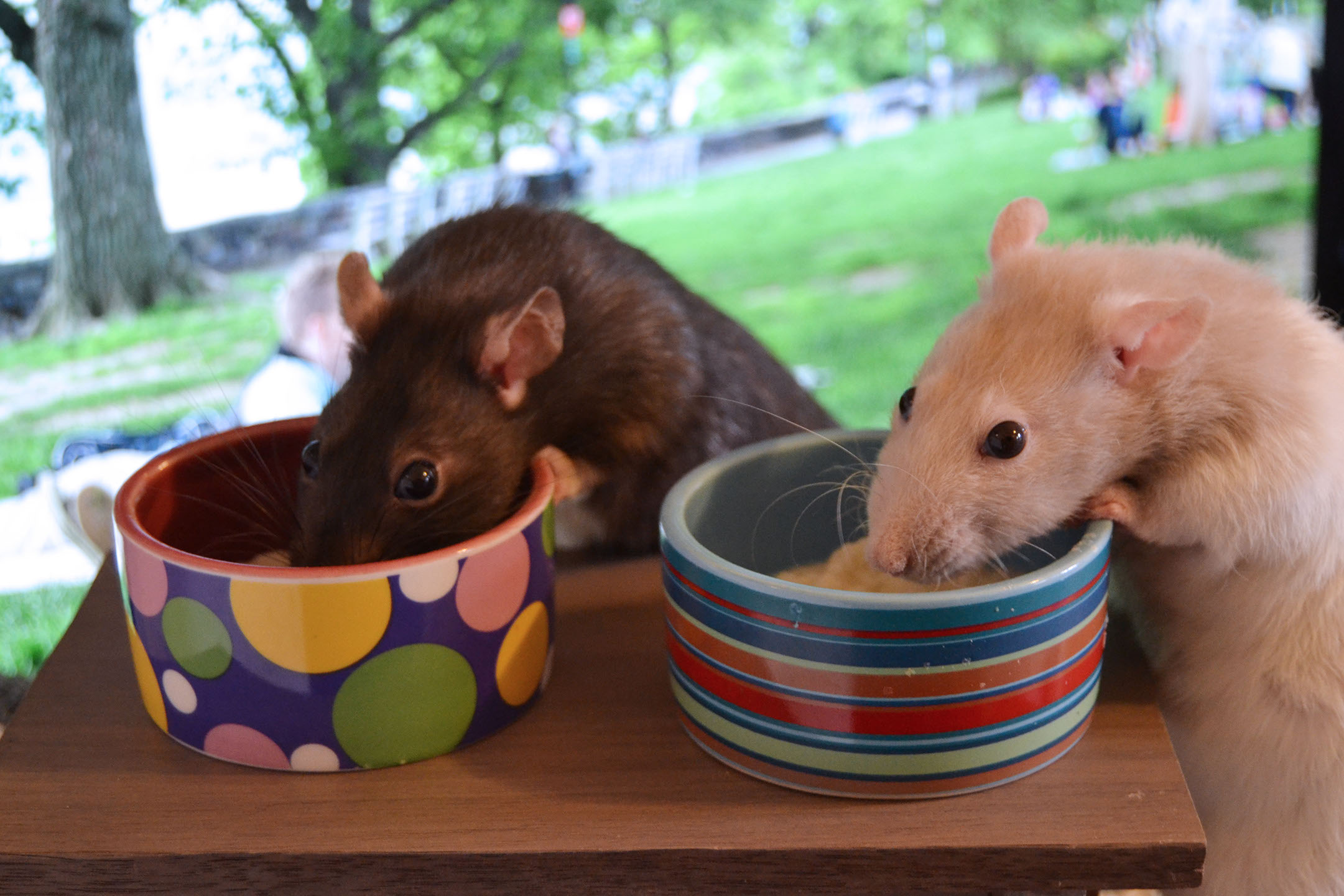
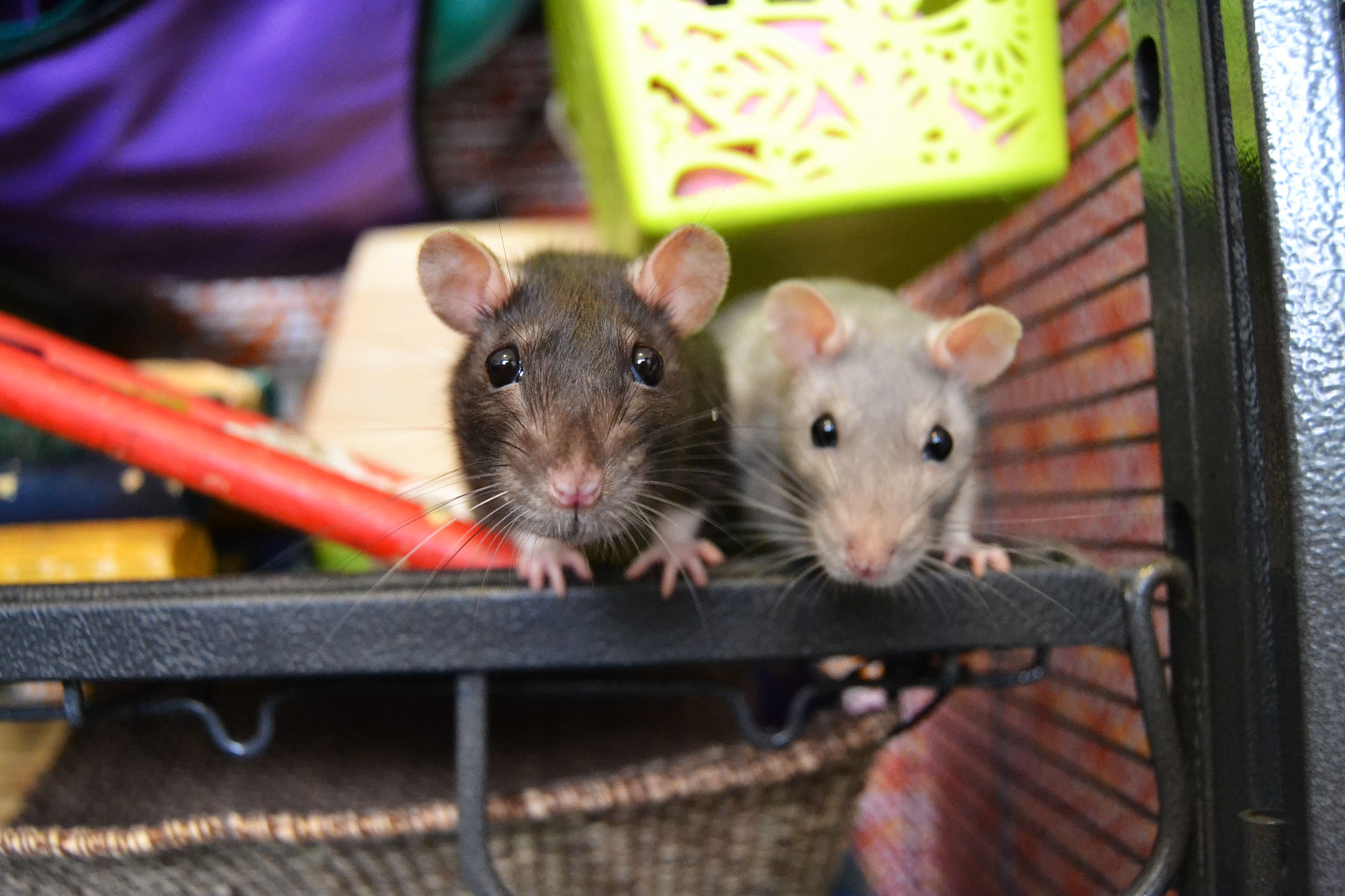
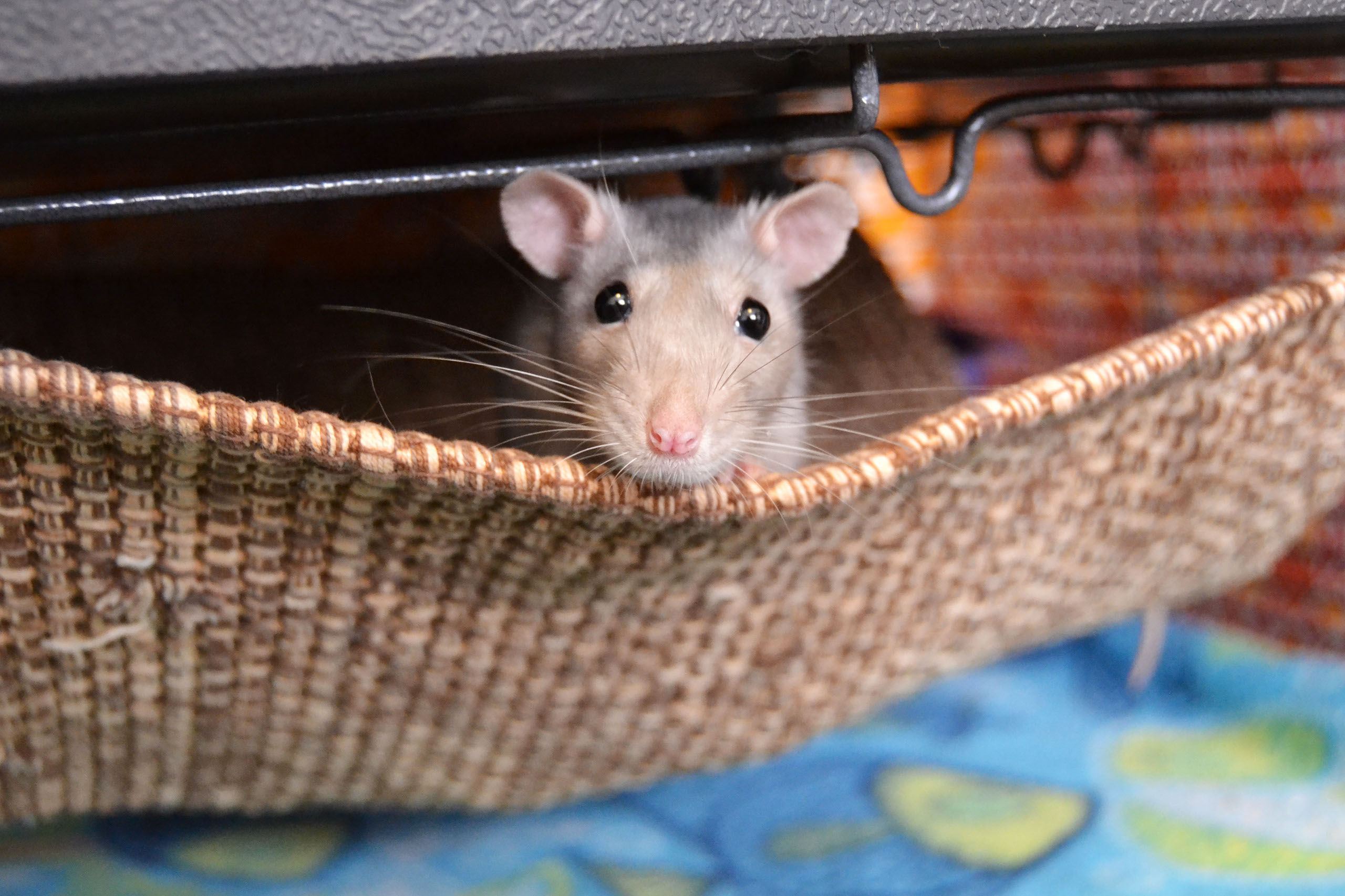
Far too often fancy rats purchased at pet stores, or from private breeders, are ill, mis-sexed, and/or pregnant. They often have life threatening respiratory diseases or parasitic infestations, due to the improper and unkempt living conditions.
After all, breeders and pet stores are businesses, and their priority is making a profit. It's not providing adequate care, housing, exercise, and medical assistance to these animals.
All breeders and pet mills (where the animals get purchased from, in order to come to the pet store) are mass-breeding facilities, that crowd many animals into barren cages, with little regard for their welfare. The breeding fancy rats females at these farms are forced into lives of confinement, only to be destroyed or discarded, when they can no longer churn out cute young ones.
Knowing there are already thousands of homeless fancy rats, why not choose to adopt instead? The only way to break the cycle of homeless animals in shelters, abuse of animals in pet stores, and by initially well-intentioned pet owners, is to #AdoptDontShop.
There is a lot of misinformation out there, perpetuated by pet stores, and well-meaning, but misinformed rat guardians. During adoption with ECC, we make sure to provide written information, as well as an orientation, to the approved adopter and family when they meet the animal(s) that they are interested in. We make time to (continue reading)...
... show people, first-hand, appropriate enclosures, instruct in proper handling, diet and exercise needs, and share medical files, as well as recommendations as to what other vet offices might work for this particular species.
If our adopters already have companion rats, and are adopting others, at ECC we will provide for a neutral play-pen, introduction area, with plenty of enrichment and diverse ratty safe foods. Our adoption coordinators, and adopters, can see first hand how the rats get along, and adoption can be made based on whom the resident rat(s) best get along with. Our adoption coordinators can also assist the adopters with instructions, and information on what to expect onward, and how to best carry out needed post-adoption separation, as well as succeeding intros in adopter's home.
Adopting an animal from a rescue group such as the Empty Cages Collective (ECC) greatly reduces the IMPULSE BUY at the pet stores- a huge contributor to animal neglect, misinformation, abuse, and abandonment.
Adopting with us also helps save more animals, as a foster homes opens up, and other animals who would have had no one to help can get saved.
Not only do the rescued fancy rats give unconditional love, but they have been shown to be psychologically, emotionally and physically beneficial for their adopters. Caring for a companion rat can provide a sense of purpose and fulfillment, and lessen feelings of loneliness and isolation in all age groups. And when you #AdoptDontShop, you can also feel proud about helping an animal in need. You will change a homeless animal's whole world, and get a new best friend in the bargain. Seriously, what could be better than that?!

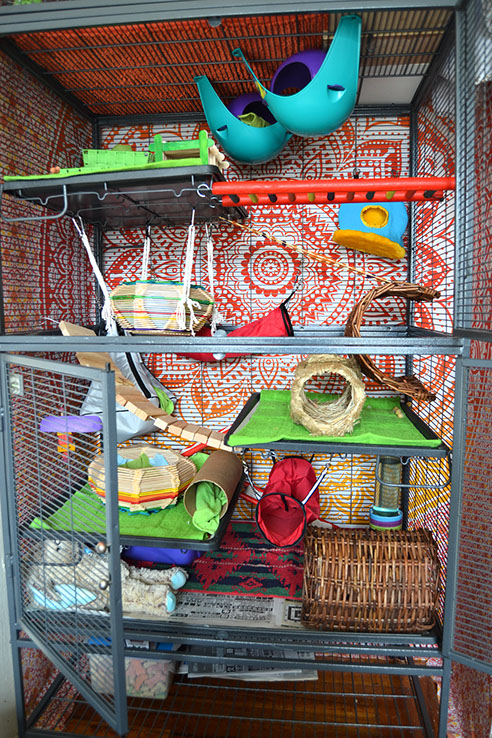
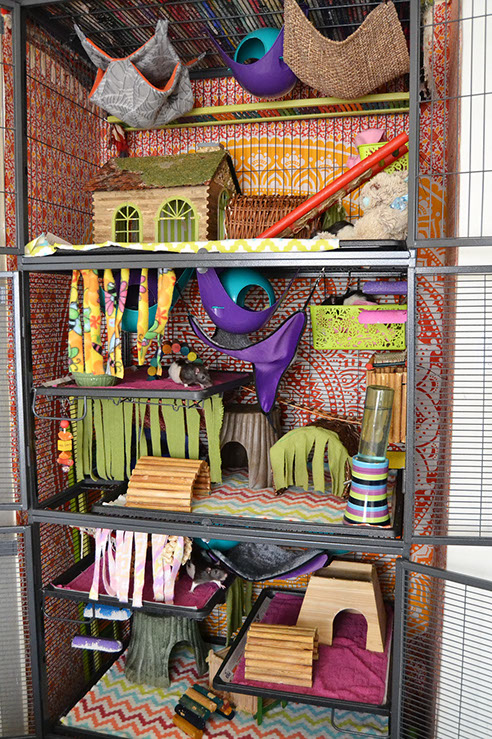
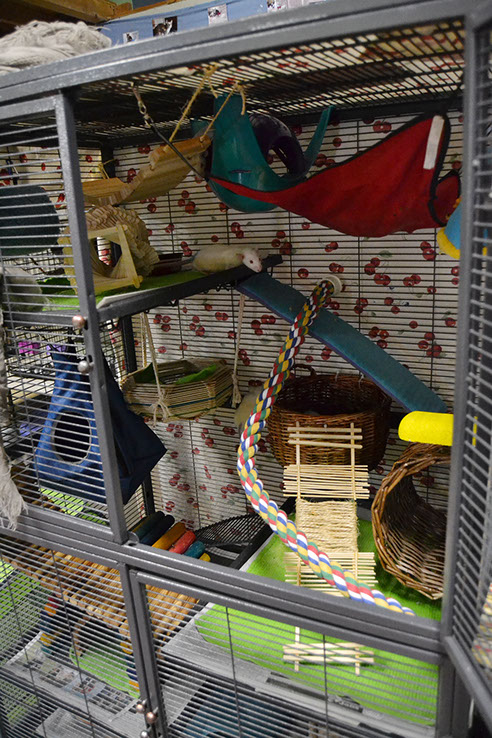

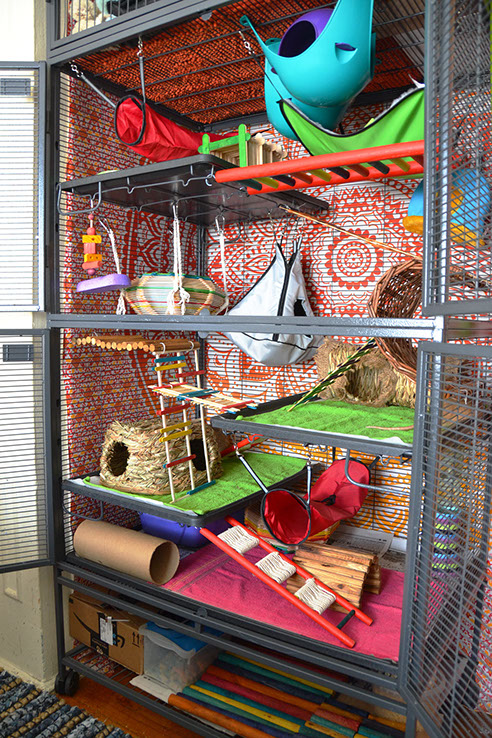

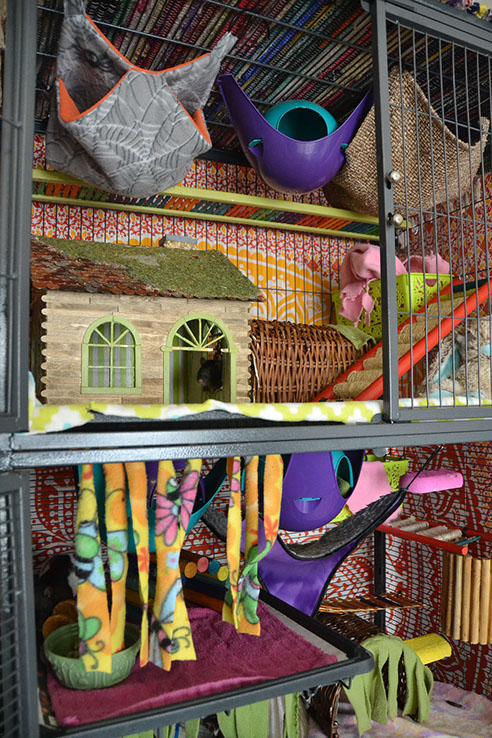



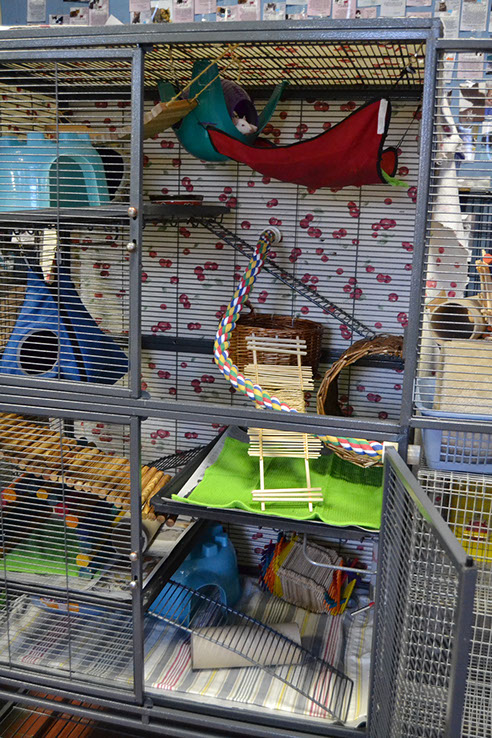
6 - 11
Wheels (never to be left in the cage when not supervised!), hammocks, space pods, hideout houses, sleepers, tunnels, lava ledges, chew toys are all good choices. Good article on rat toys can be found here.
While we know many rat guardians that do scheduled cleaning every 2-3 weeks, when everything has to be taken apart and cleaned, we often see those cages to be messy, with sticky sides, and unkempt bottom edges in the meantime, and sometimes even after the clean as the build up gets too much to control. We recommend daily upkeep (or at least every other day!) with a cleansing solution of white vinegar and water (just fill a spray bottle with half and half) for the flat cage levels, and disinfecting wipes for the cage bars. This way the cleaning part literally takes a few minutes, as opposed to hours needed to spend on scrubbing and brushing, if it was being done every few weeks. The daily cleaned cage will always be safer for the animals inhabiting it, more presentable, and would allow you to better monitor their bathroom habits, making it possible to notice any subtle changes. This knowledge will greatly assist you in maintaining their health, and inform you of any concerns, or complications on the horizon.
The decision to spay or neuter your companion rat depends on many factors. There’s not one right answer that fits all. Each individual rat’s health, behavior, age, and living circumstances help make the determination. For males, the choice to neuter is usually based on behavior. For females, spaying offers some wonderful health benefits often far outweighing the risks of surgery. Then, of course, choosing to have opposite sexes living together necessitates either neutering or spaying.
Advantages of Spaying:
- Reduces occurrences of mammary and pituitary tumors
- Eliminates ovarian cancer and/or cysts
- Increases lifespan
Advantages of Neutering:
- Eliminates the risk of testicular cancer. Reproductive cancers are relatively common in rats.
- Neutered rats are much less likely to display undesirable hormone-induced behaviors such as mounting and urine marking (or territorial marking) and may be less aggressive than un-neutered rats.
- Your rat may be calmer and easier to handle after neutering, as it is not experiencing the stresses of sexual frustration.
Best time for Spay/Neuter:
- Most rats are fixed between four and six months of age. Talk to your veterinarian, and discuss if they think the procedure to be safe, beneficial, and learn what to expect after, and how to prepare prior spaying/neutering your companion rat.
After Spay/Neuter:
Your rat should be separated from other rats for five to seven days while healing, and should be fed as usual. Be ready with a separation “room” (aka large clear storage bin container, with drilled holes for added ventilation, and soft towel (to be changed daily) for bedding). Room temperature is best, but added source of warmth, placed in one side of the container, can also be beneficial. Keep your companion rat in a clean, quiet environment, and try to minimize excessive running, jumping, or hard play that may stress the incision. Clear storage bin “recovery rooms” allow for easy monitoring, and can be easily moved, as to always stay close to us.
Also have ready some mashed up food (such as Gerber Rice cereal, or whatever your rats' favorite) for syringe feeding, and ask your veterinary technician to show you how to give oral medication. You are likely to be sent home with pain medication to give 3-4 days after surgery. You companion rat should be eating and drinking within 12-24 hours post surgery, but may need help starting up.


The purpose of rat-proofing a room, or a designated area of the room, is to be able to have the rats out, and not worry that they will injure themselves by getting stuck, or chewing on something that could harm them. While some people are lucky enough to be able to do this in a spare bedroom, most of the time we (ECC) are giving advice as to how to secure a part or a room that is already multipurpose, and does not have that section of the room available at all times. Here are some important elements to consider while rat-proofing:
- Hide your cables. Rats are notorious for chewing on almost anything, so make sure that the things your ratty family members are choosing to chew are pet friendly, and do not have access to electric cables. Purchasing and installing Cord Covers is a safe, and inexpensive way to protect your ratty family.
- Cover any possible areas that could lead to rats getting stuck or escaping into a not-rat-proofed room. CC storage grids can provide for easy sectioning, and if connected with zip ties instead of the connectors they come with, they can easily be removed, and stored away until they are again needed.
- Adding a large play pen. For those who do not have room to install a permanent rat play room, setting up a large play pen (build out of two or three tall doggy playpens LINK HERE, and HERE) is an easy way to provide for a safe environment where you can spend some time with your ratty friends, or even have them explore it themselves while you monitor from close by. Advantage of this would be that you can allow for more space than you would if the set up was permanent.
Whether you choose a permanent ratty play room, or a removable one, it is important to keep in mind that rats are among the most intelligent animals around, and love mental stimulation. Please, keep it safe, and add more and more to the enclosure as time goes by, read a book or two on rat training and try it yourself, build an obstacle course, and mix it up often allowing them to always explore new things. Most importantly, always use positive reinforcement, be patient, respectful, and loving.



















Appropriate to house 2-3 rats: Single Level Critter Nation from Midwest Homes, Martins' Tower, Martins Skyscraper, Ware Living Room Series Ferret Home, Living World Deluxe Habitat (X large)
Appropriate for 3-5: Double Level Critter Nation from Midwest Homes, go2buy Metal 3 Doors Rats Rabbit Ferret Cage and Martins The RUUD.
Appropriate for 6-8: Trople Level Critter Nation from Midwest Homes = Double plus one more add on level.
Our favorite cage, and the one we recommend the highest, is the double and triple story Critter Nation from Midwest Homes.
Here you can see even more of ECC foster homes' rat enclosures and play-pens, so you can get a good idea of the space needed for both inside and outside-of-cage time.
Please do NOT use wood shavings as bedding! Wood shaving have volatile oils that are often the source of respiratory problems in rats. Given how easy it is to train rats to use the litter box, we recommend using newspapers covered with fleece for covering the cage bottom and different levels. While some ratty lovers and guardians have bedding on the whole lower level of the cage, we find that placing a litter box filled with Yesterday's News cat litter and a pee rock (any mid sizes smooth surface rock will do!), in one corner (secluded corners works best!), and having the rest of the cage levels be covered with newspapers and fleece, promotes the idea of a restroom, allowing for the rest of the cage to be much cleaner, which will also help maintain the tidiness in rats themselves.
The cage floor (or levels) themselves, although mostly made out of wire, should NEVER be left as is. Bare wire floors are responsible for feet swelling, redness, sores, ulcerations, bleeding, bumble foot (together with unkempt cage cleaning), and other hind foot relates issues. Because rats spend a good portion of the time when the whole body weight is carried by their hind feet (example- while eating), it is vital to make the cage floor and levels safe for them to use long term! If your cage (or the cage you are yet to get) has bare wire floors, add plastic covers (sometimes available to buy from the same company), cardboard cut to size, or another material that you can easily change up, disinfect and reuse. Or, better yet, get a cage that already comes equipped with plastic covered levels!
Here you can see some pictures of our current rat enclosures (as mentioned above, we prefer using Critter nation cages, and can not recommend them enough!) and the cage hideouts and enrichment, so you can get a good idea of the space needed for both inside and outside-of-cage time.
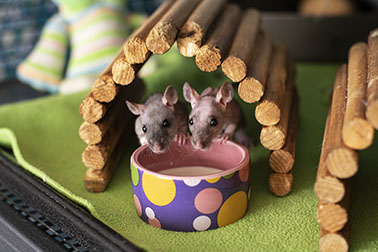
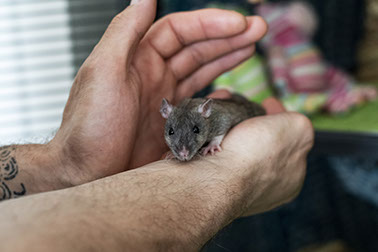
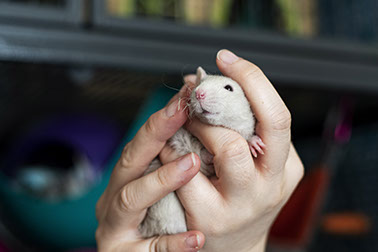
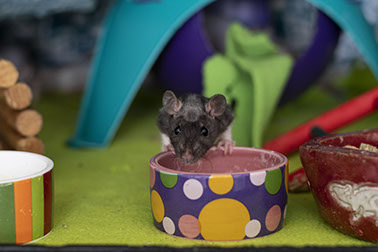
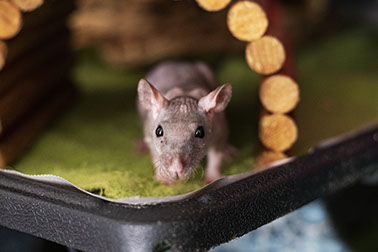
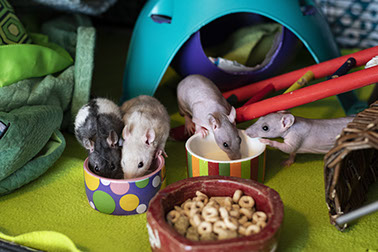
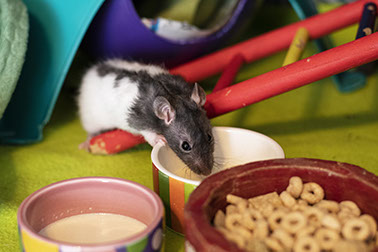

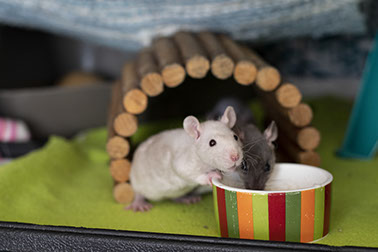
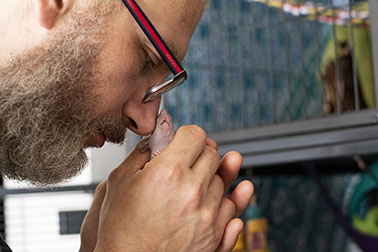
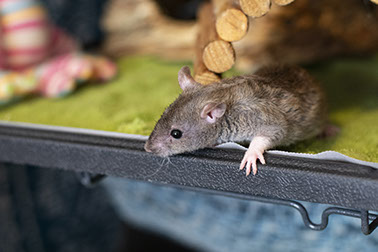
S'mores, Tate and Dorian
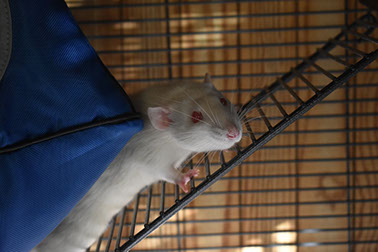
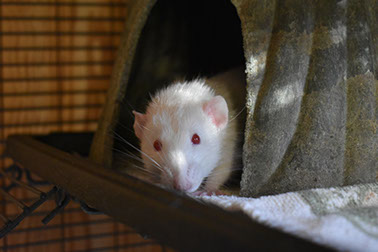
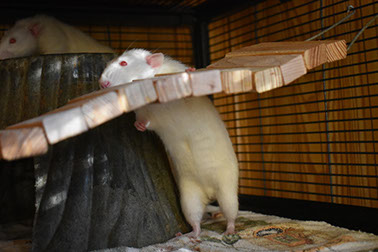
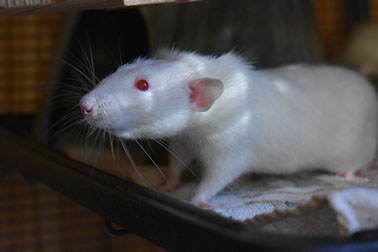
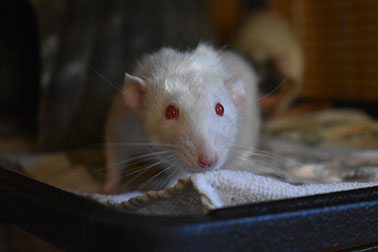
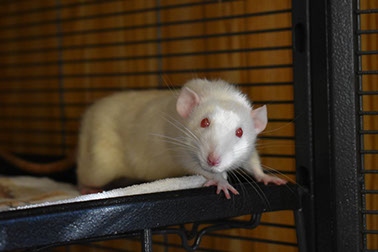
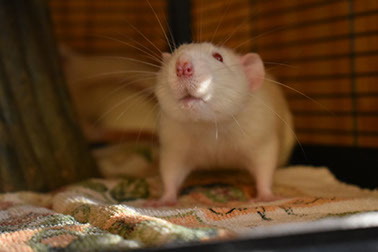
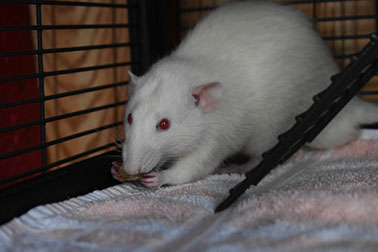
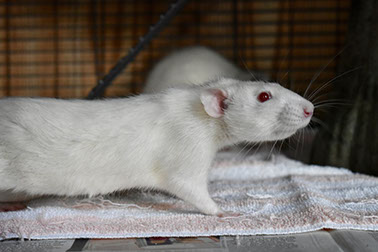
More soon to come...



Apply to foster fancy rats with us























